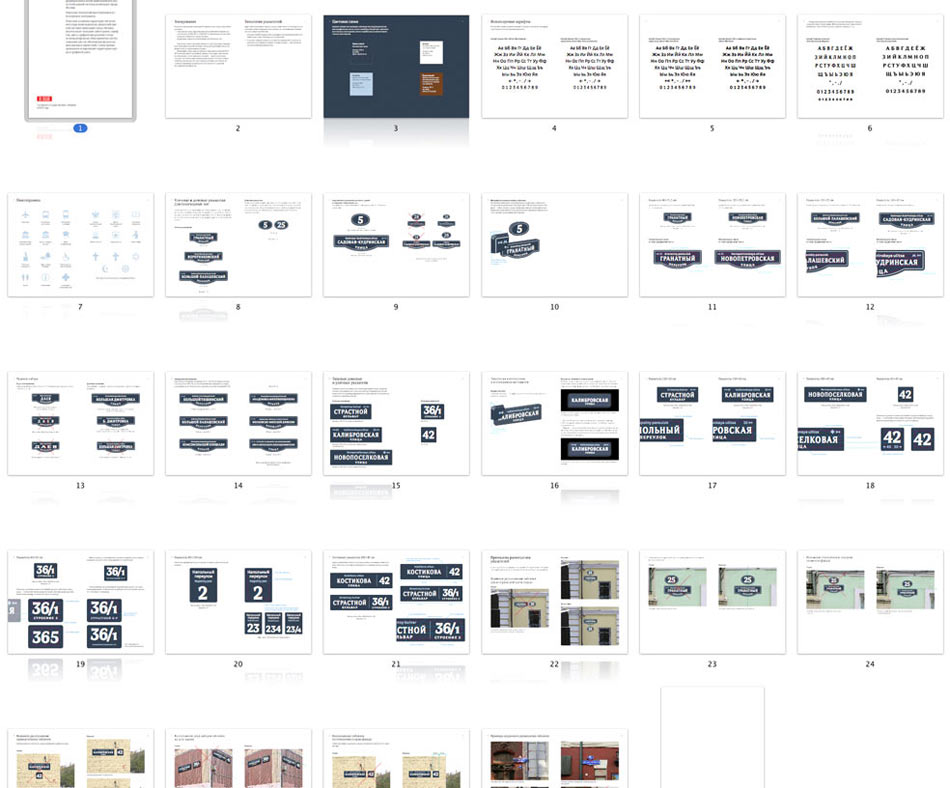The making of the Moscow street navigation system
Overview Process
Let’s start. Navigation for pedestrians in Moscow will be provided through street name plates and signs on poles. Studying the foreign achievements in the area, analyzing materials and typography.
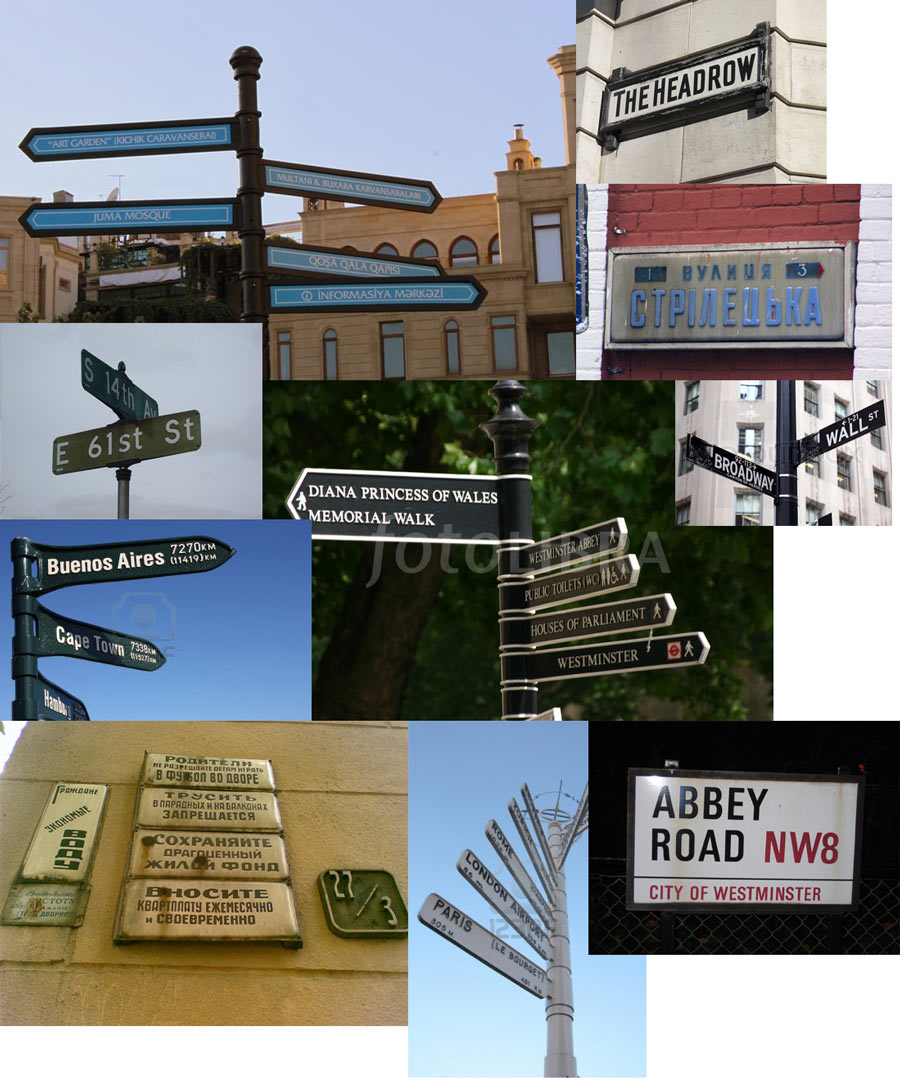
Plates
Starting with a simple approach. Trying different layouts, colors, searching for the shape.
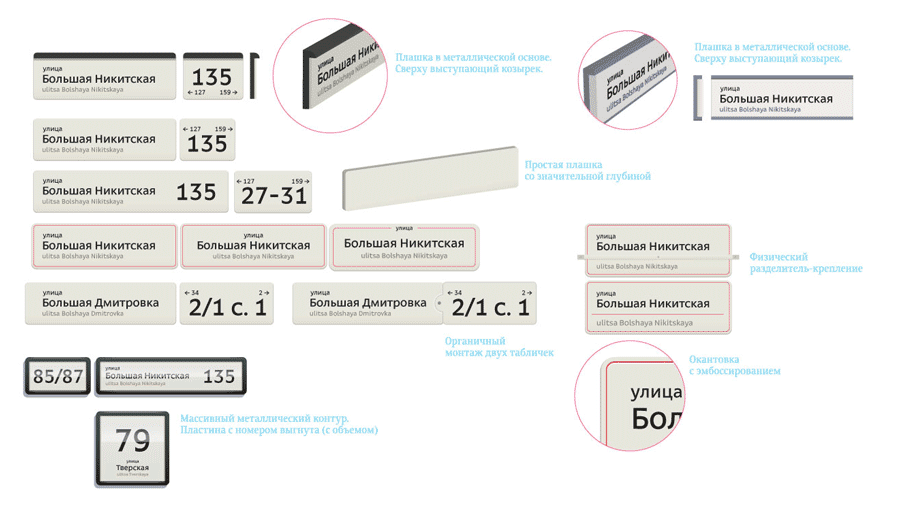
Trying to work with the color and volume of the plates. It’s clear that the plates in the center of Moscow will require a special color to distinguish them from the plates in residential areas.
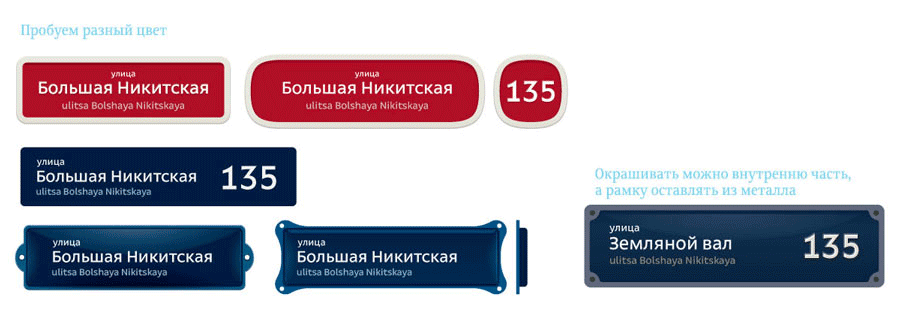
Experimenting with embossing, decorative elements, connecting structures.
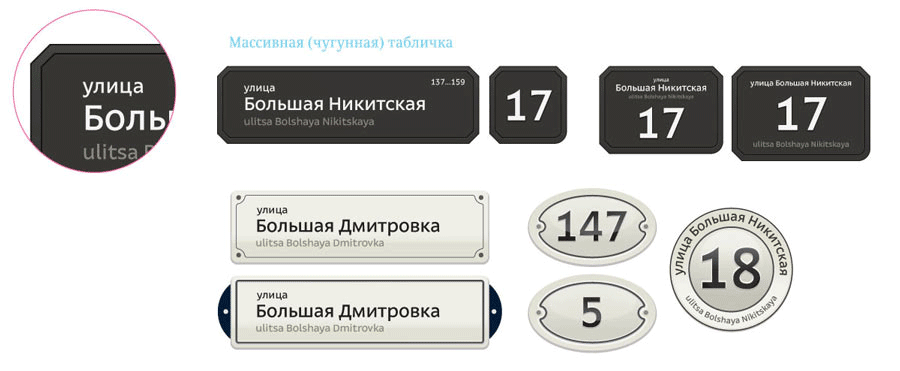
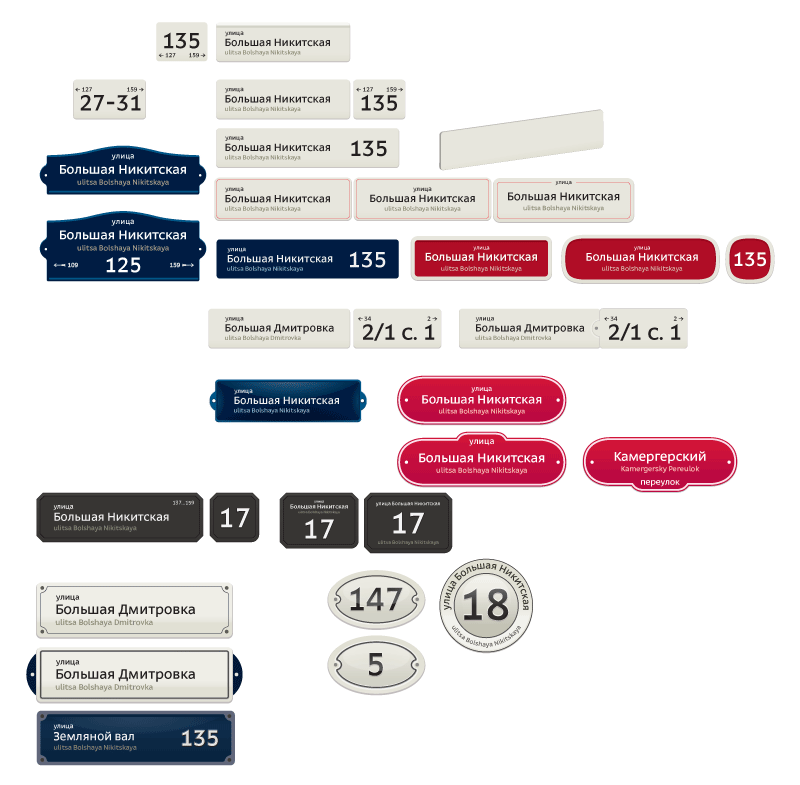
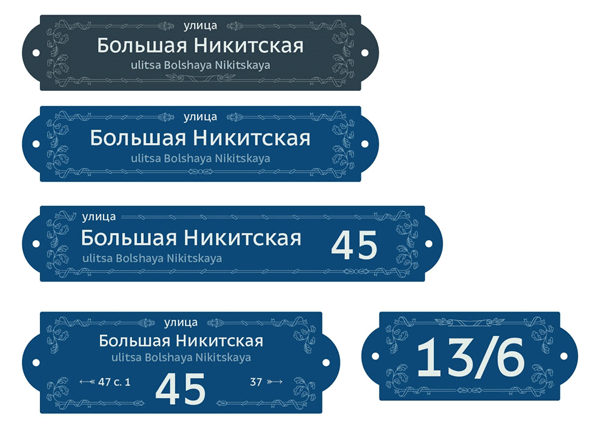
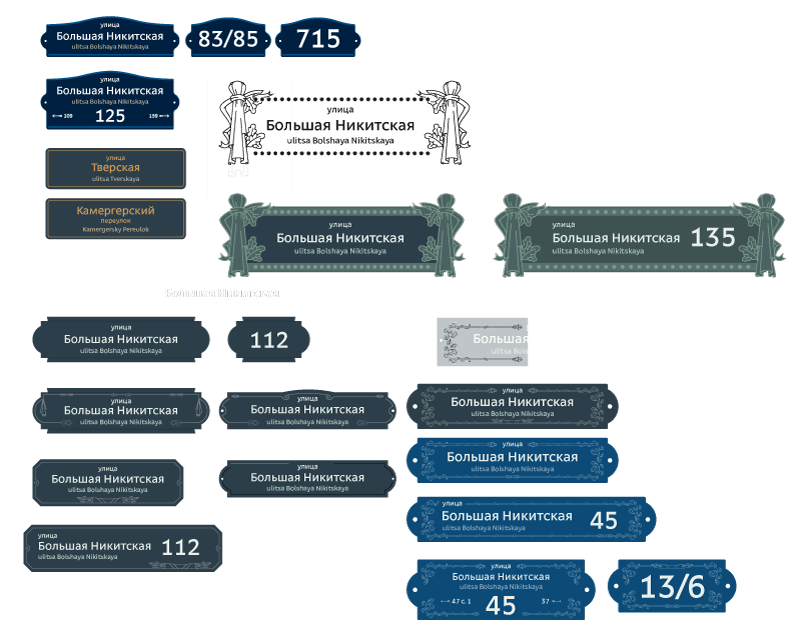
Trying out our findings on signs, too. Searching for the shape and attachment solution. So far we like the vertically compact layout. We also try not to use arrows excessively: the position of the sign itself should be enough to show the direction.
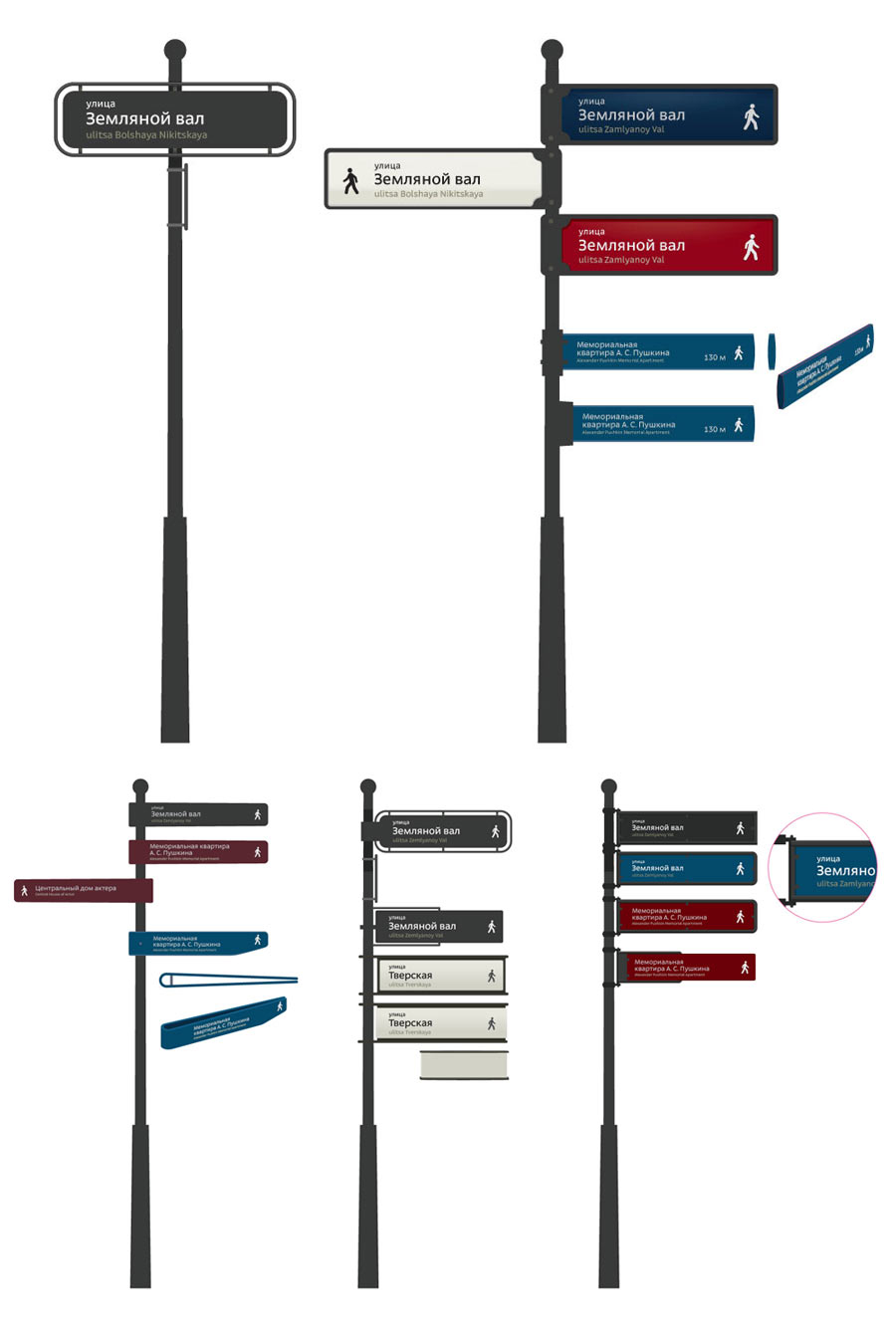
The search continues. The blue color looks the most promising right now: city residents already know it and there is no reason they should get used to a new one.
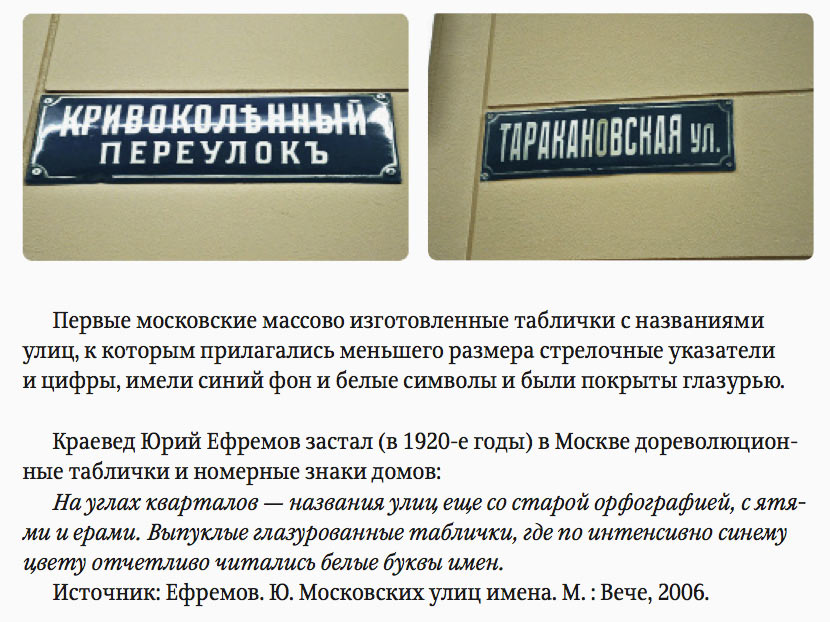
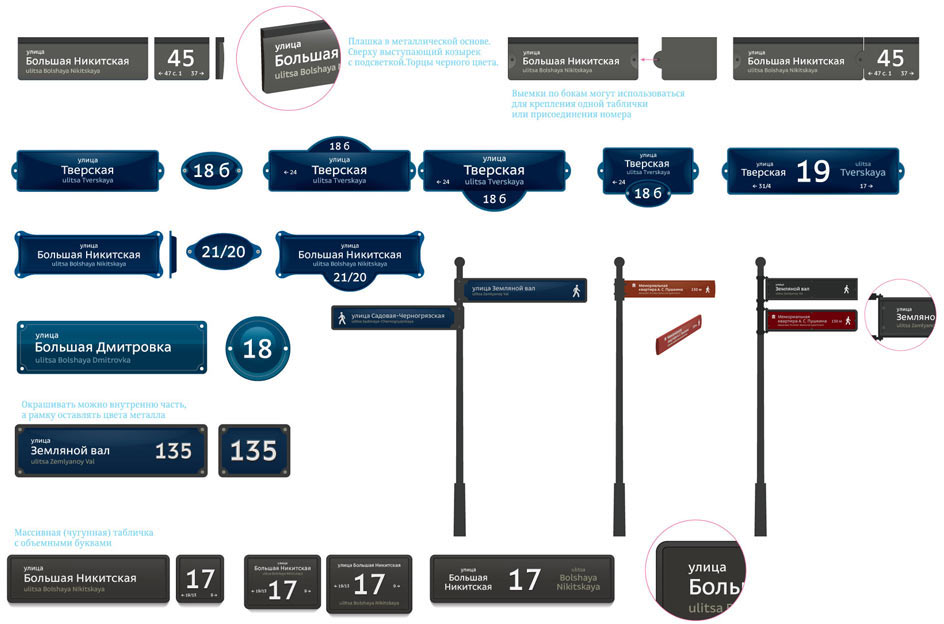
Trying to take into account the variants with composite coloring. Also we need to provide space for advertising media near the signs.
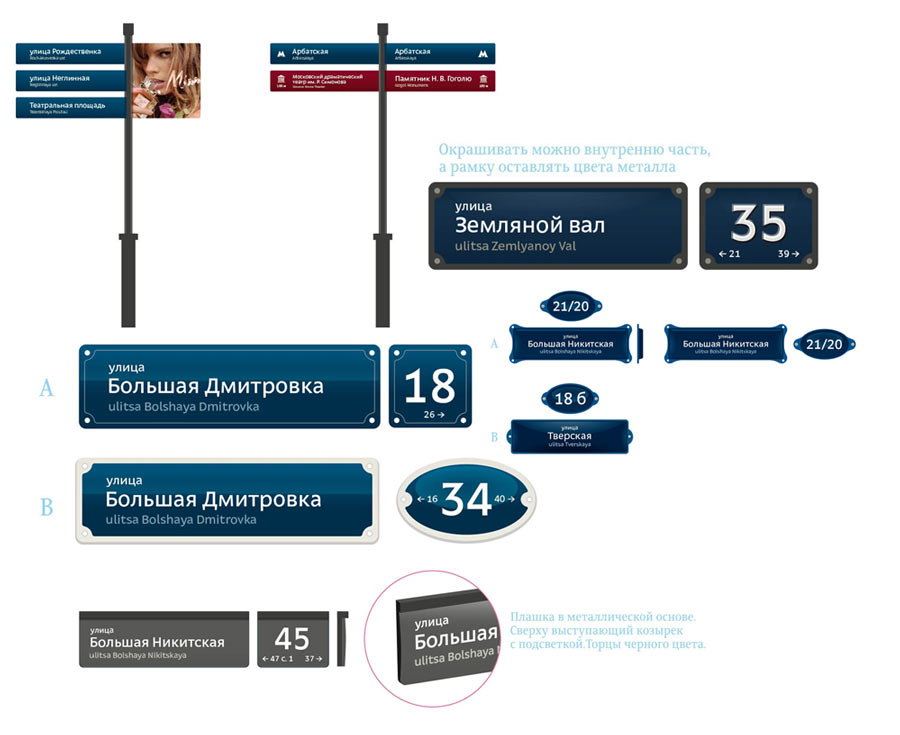
Choosing the most promising designs of plates and signs and showing to the artistic director.
Artistic director: I wouldn’t change the shape of the plates drastically. The ones that are on the streets today are very good, very recognizable. All they need is just a small facelift, and they’ll look cool. What you have created is more appropriate for Lviv.
Having another look at the current situation. It is evident that there is a problem with the position of the house number: there is no strict rule as to where it should be. On the corners of buildings plates can be on different heights, which looks horrible.
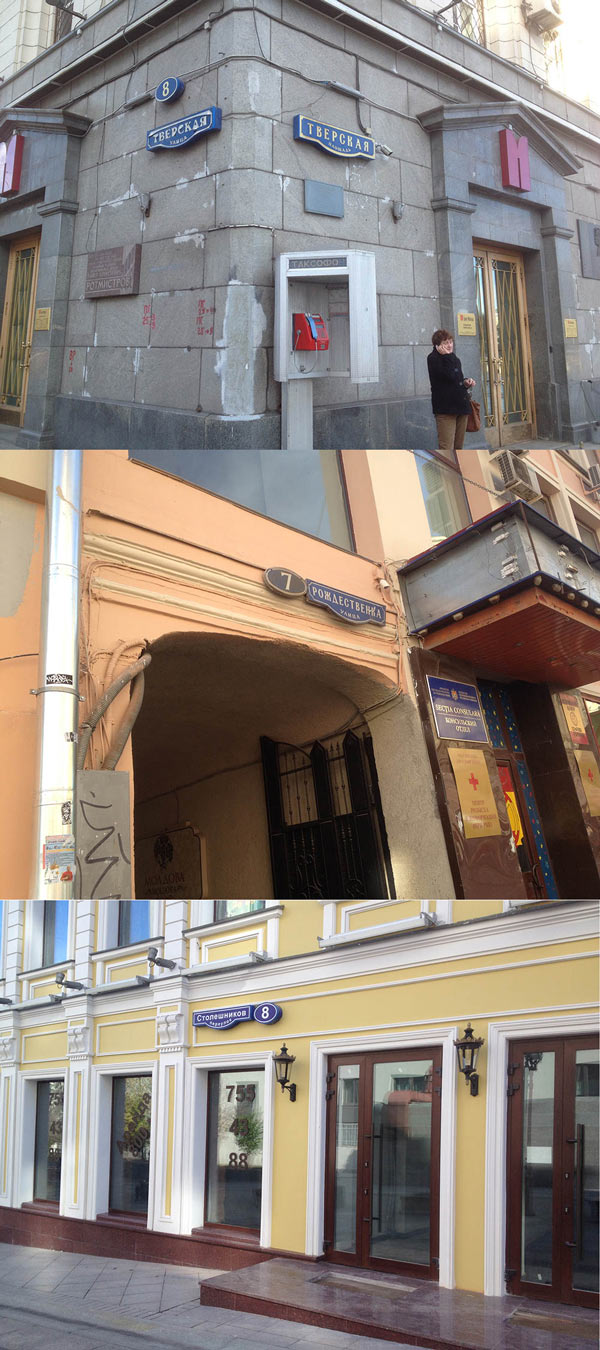
Trying to make a gentle facelift. Looking for the best position of the semi-oval, transliteration and mounting holes. We get an idea to add micronavigation to the corners of the plates. We also need to test out the longest street name possible.
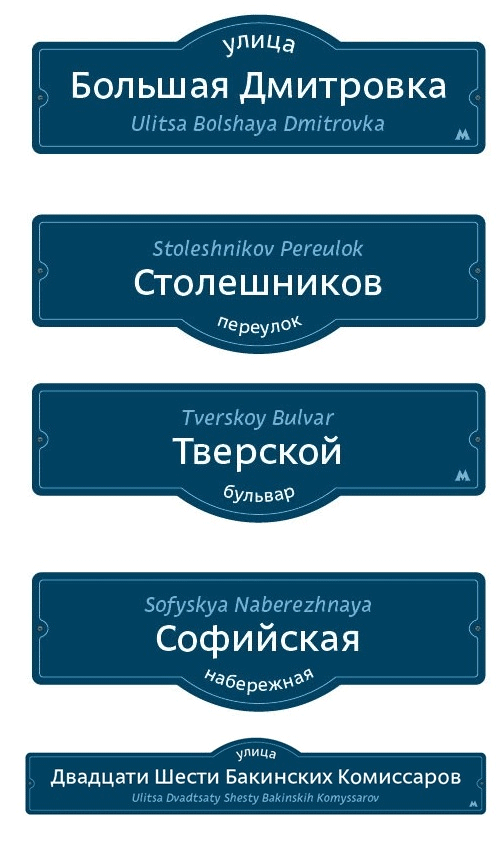
Considering the possible directions of development. Position of the icon on a sign reflects the relative location of the landmark. Asking the colleagues—everybody seems to get it.
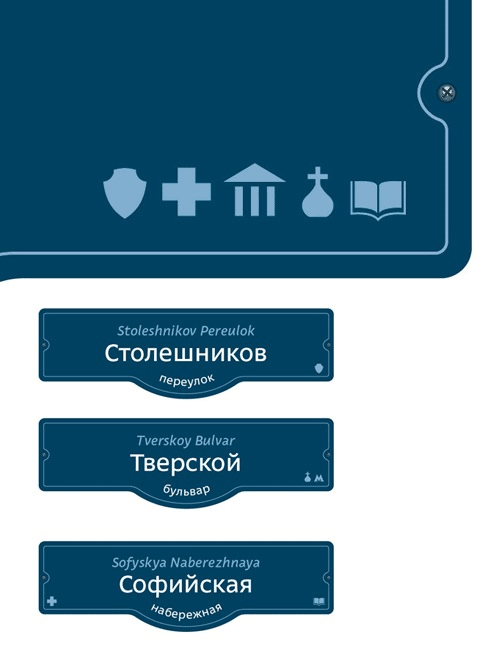
Searching for the shape of the oval, layout, pictogram placement, transliteration and checking out how the signs look on poles.
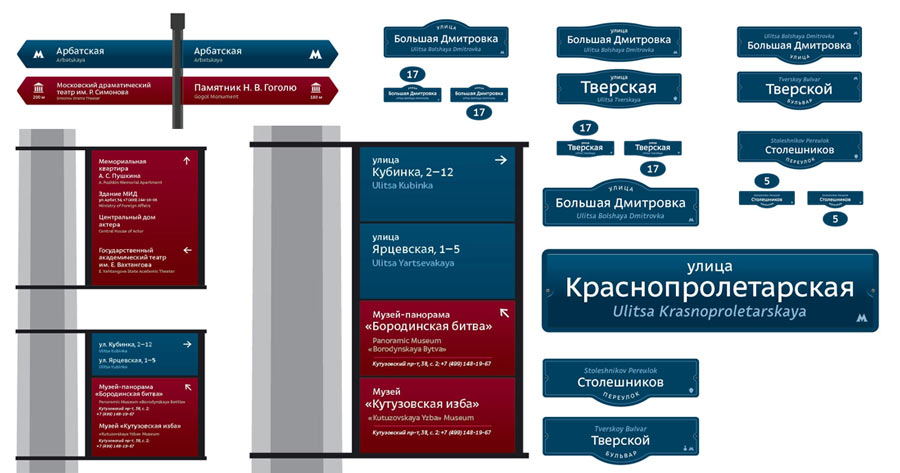
The art director suggests to develop a micronavigation concept which makes use of building corners and small columns. It makes more sense to use the columns to display not only the usual information, but also its Braille version—the height of the columns is ideal for that. At the same time, such navigation will be helpful to shorter people, the visually impaired, children and disabled persons. Putting all ideas together for the first demonstration.
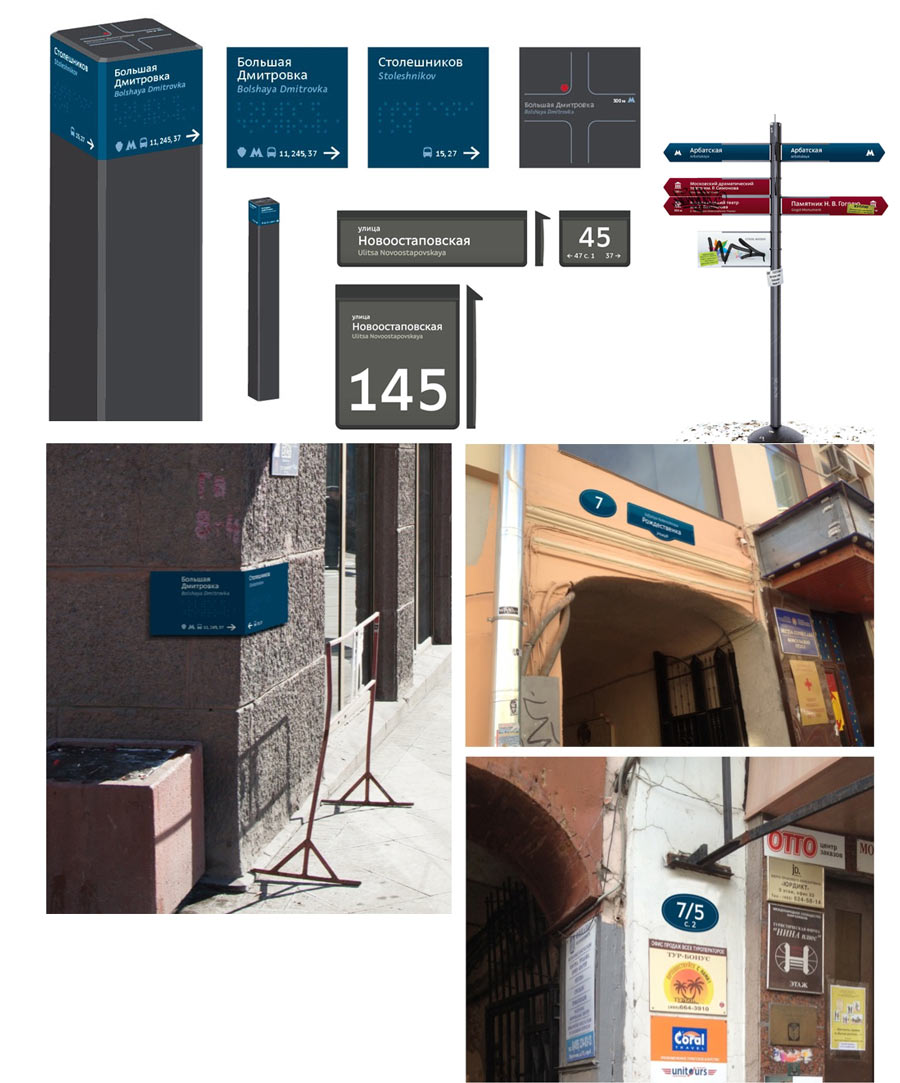
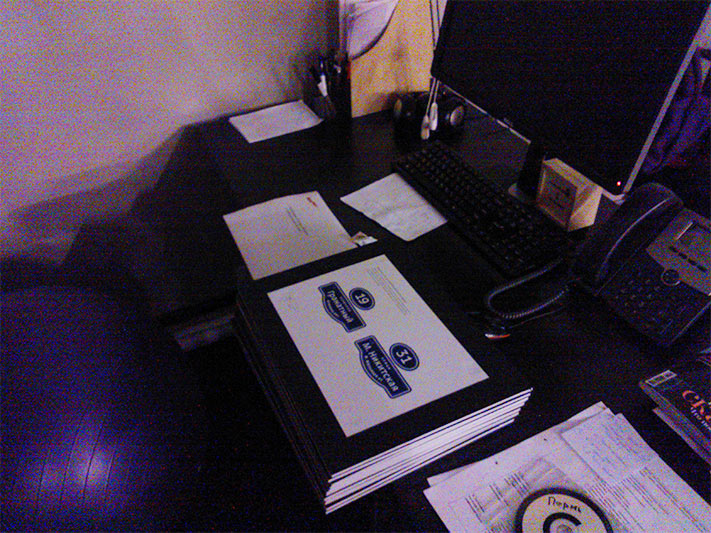
The overall direction was chosen correctly, we leave it as a working concept and going out to the streets again. Looking at what’s hanging around the city today.
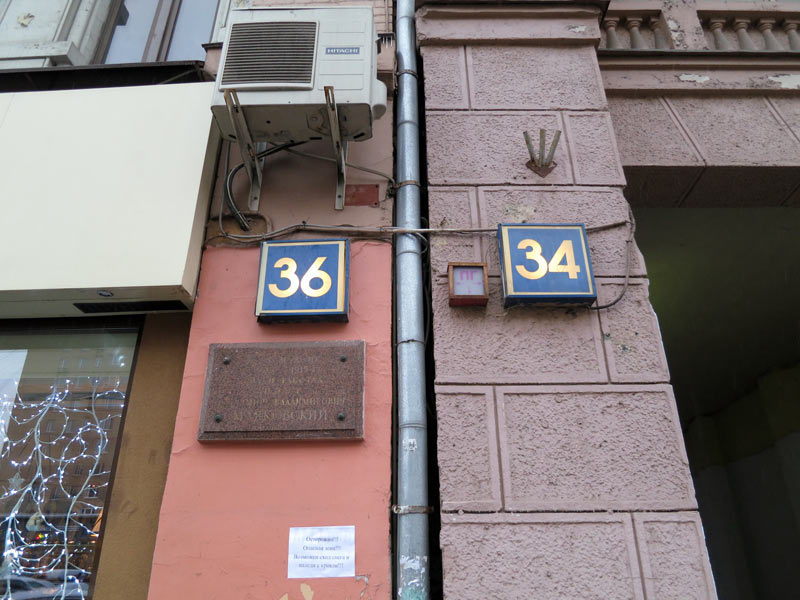
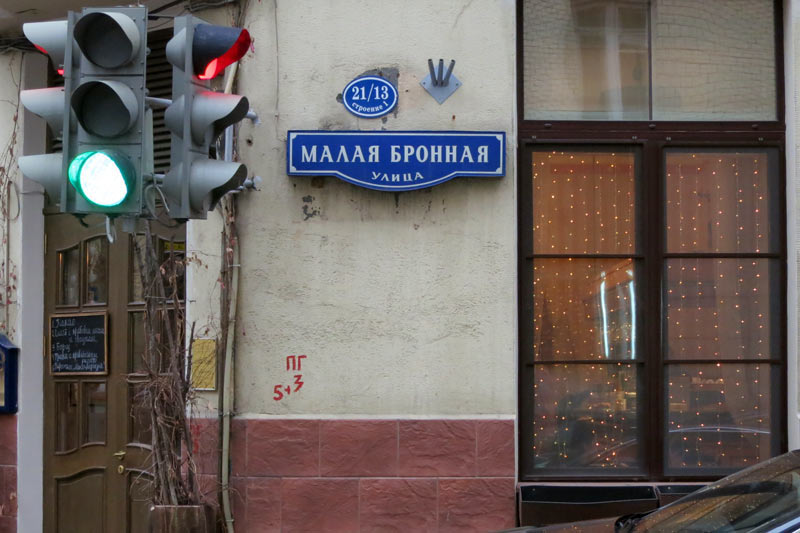
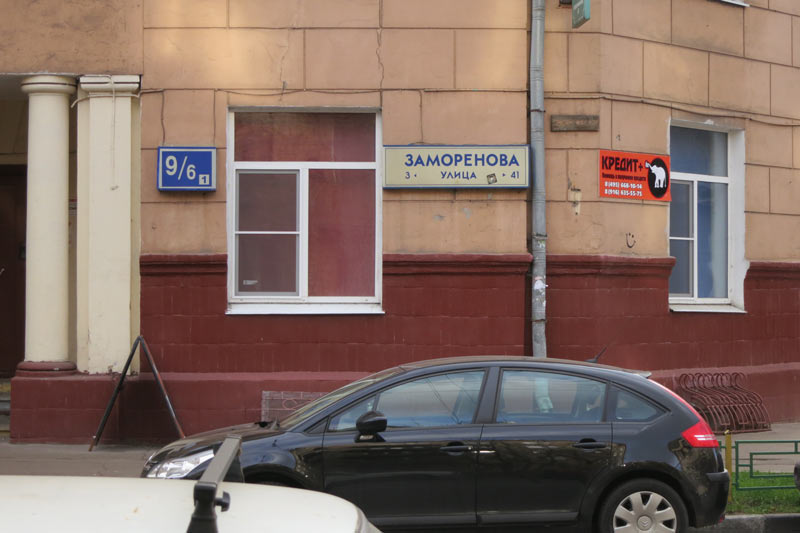
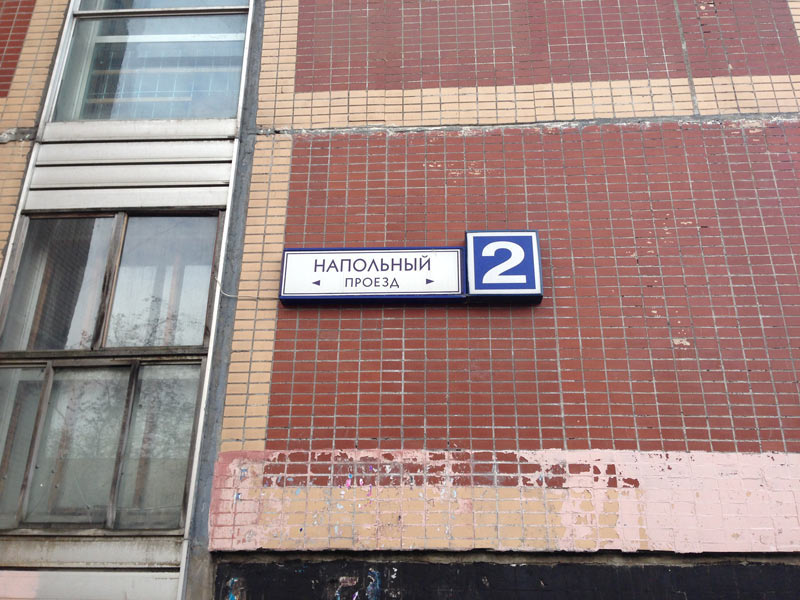
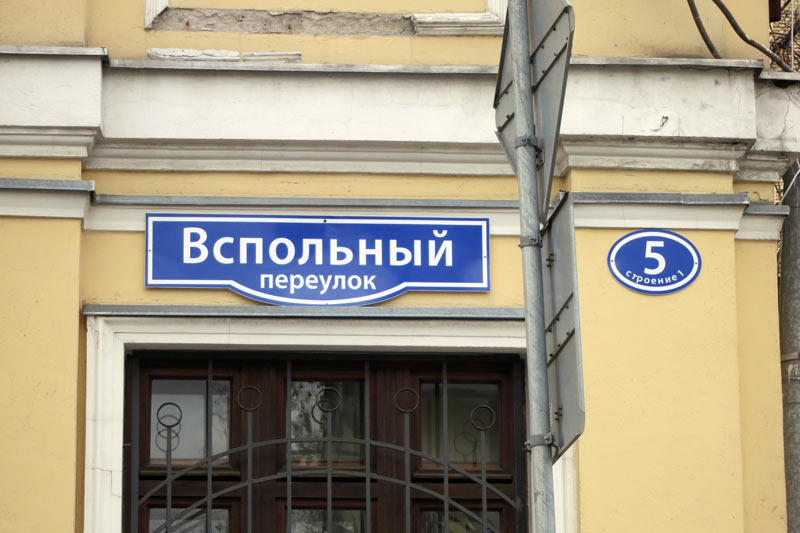
Street name plates require a special study. The second attempt, the search goes on. Choosing the typeface.
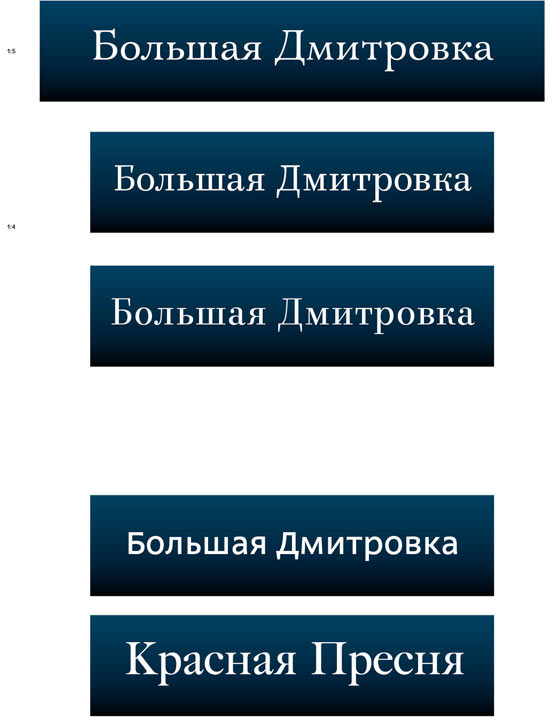
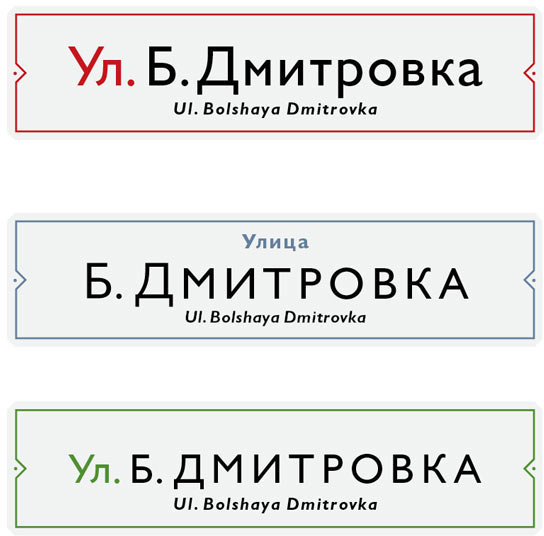
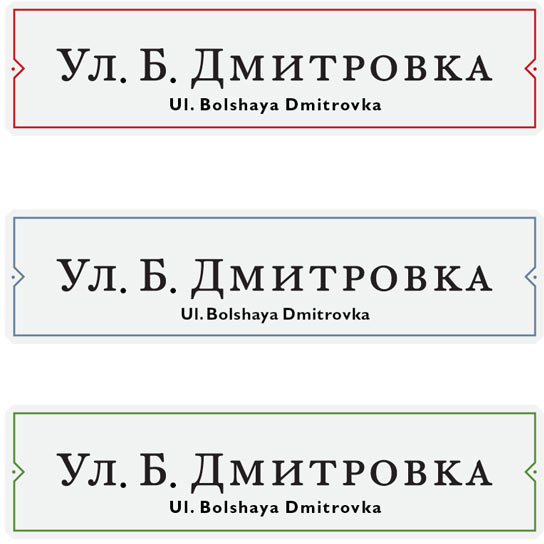
Gradually we start searching for the shape of the plates. The artistic director believes we should adhere to the unique Moscow shape with a “belly.” Drawing such plates.
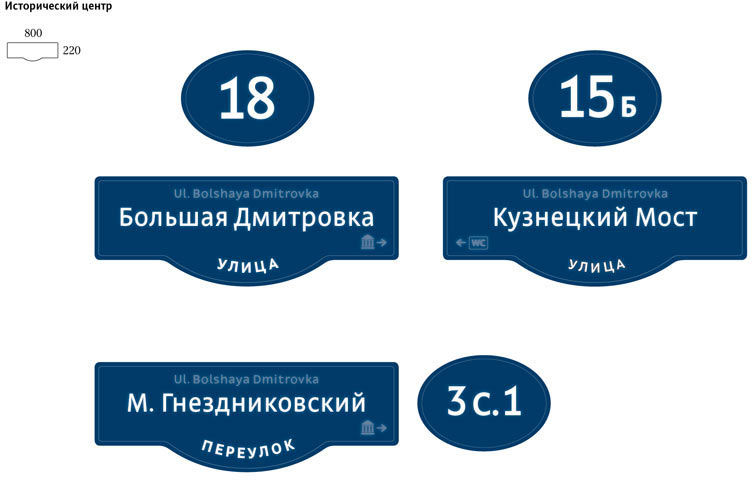
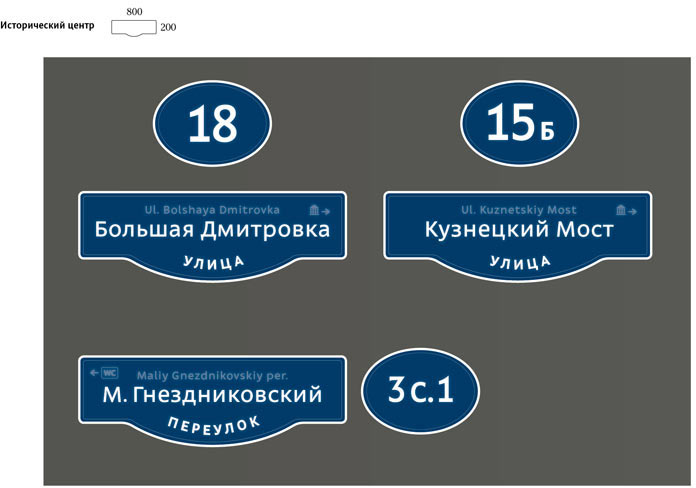
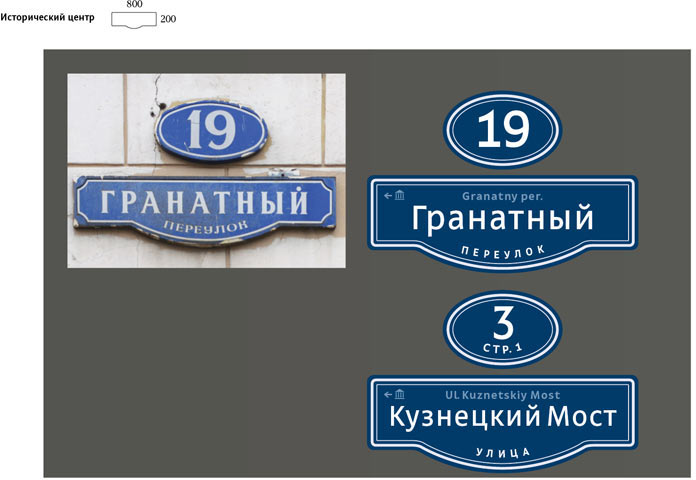
Simultaneously making house number plates.
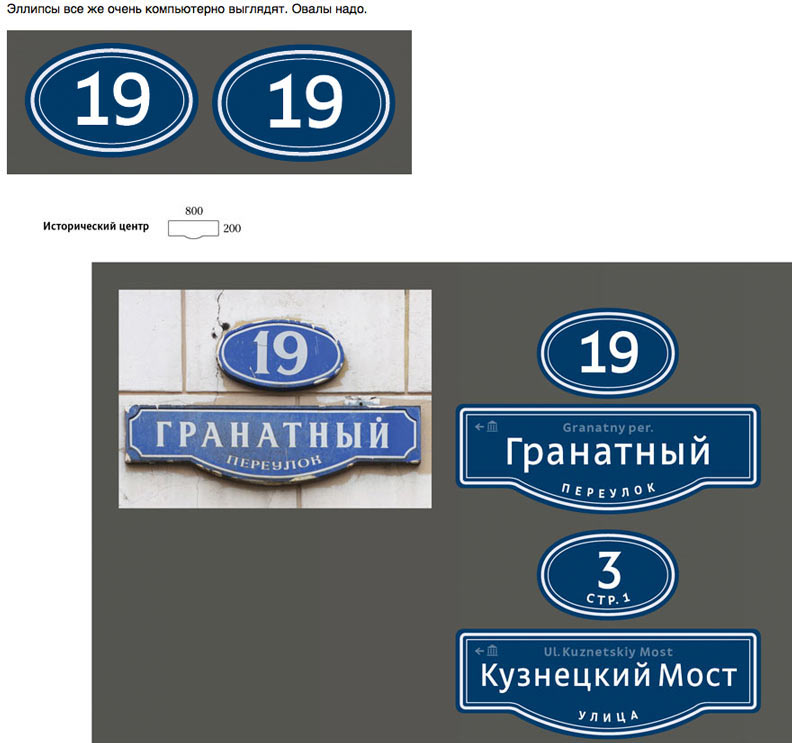
Considering where to put the English street name..
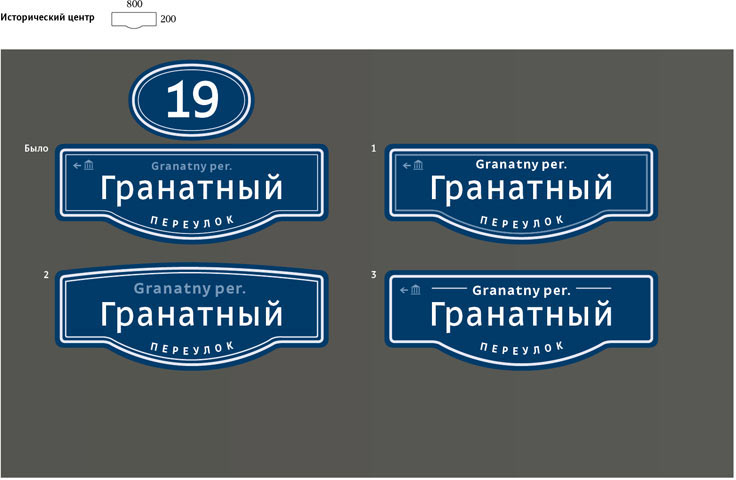
Choosing the frame.
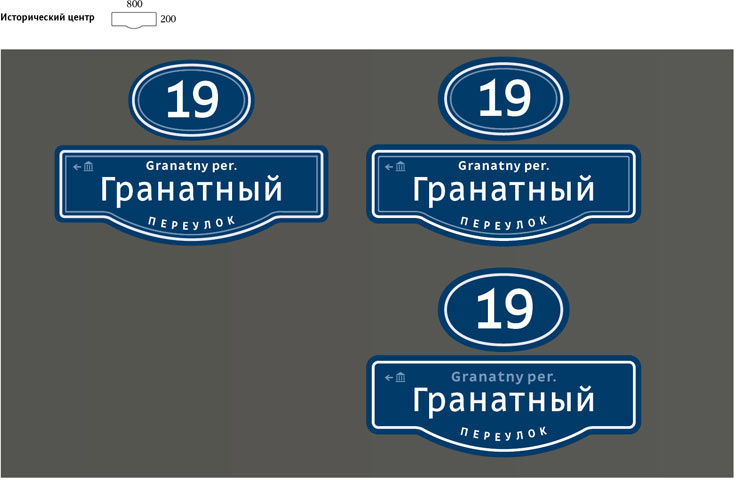
The artistic director suggests to create a special typeface in the spirit of traditional Moscow plates. The type designer draws the first letters. Trying to type street names both in lower-case and upper-case. Settling on upper-case.
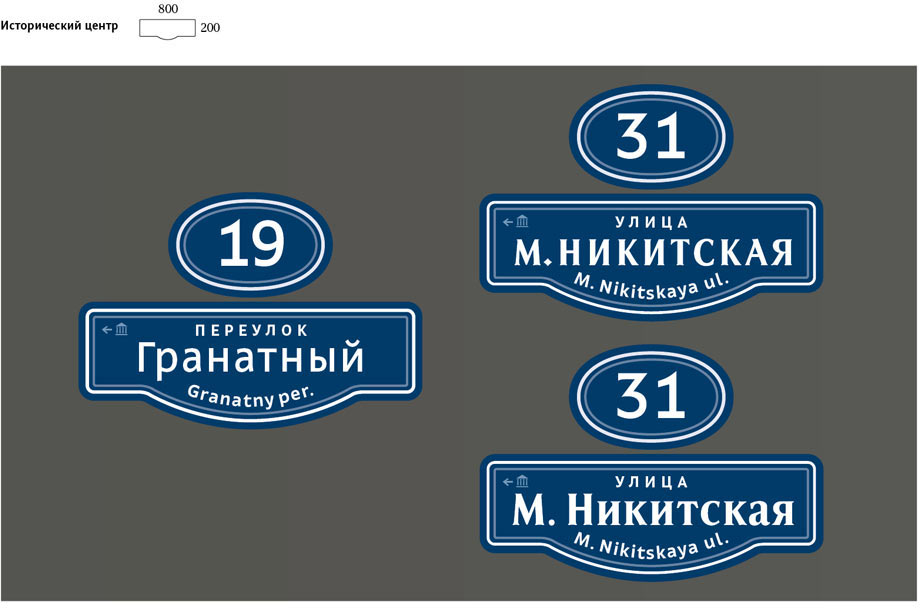
Working on the details: the shape of the signs, the type and spacing, thickness and rounding of the frames.
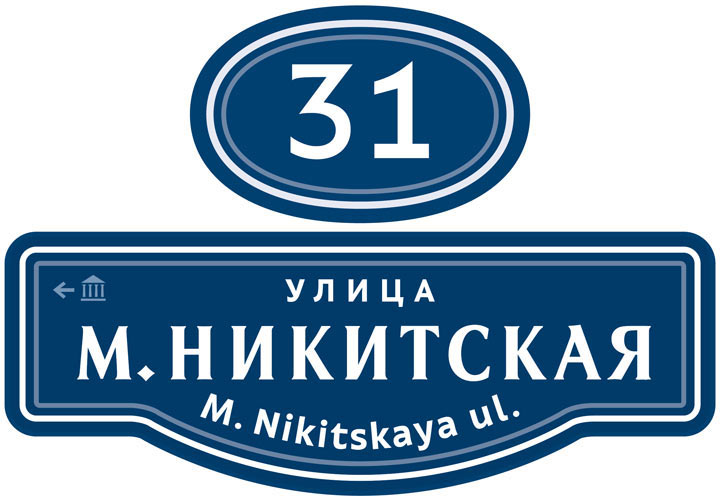
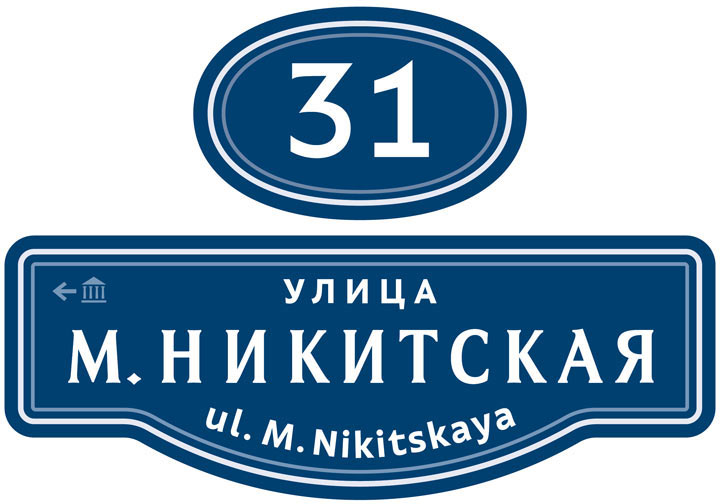
Visualizing the plates.
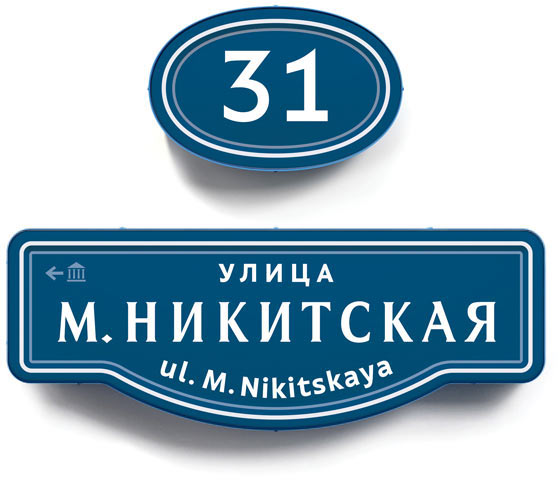
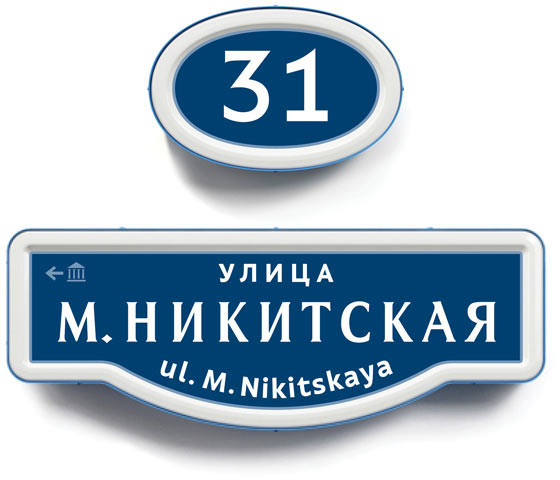
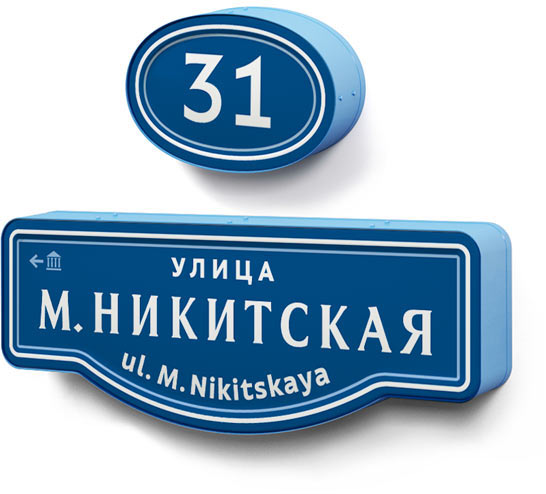
Carrying out field testing which reveals legibility problems. The plate turned out to be higher than the old one, but the text on it—smaller.
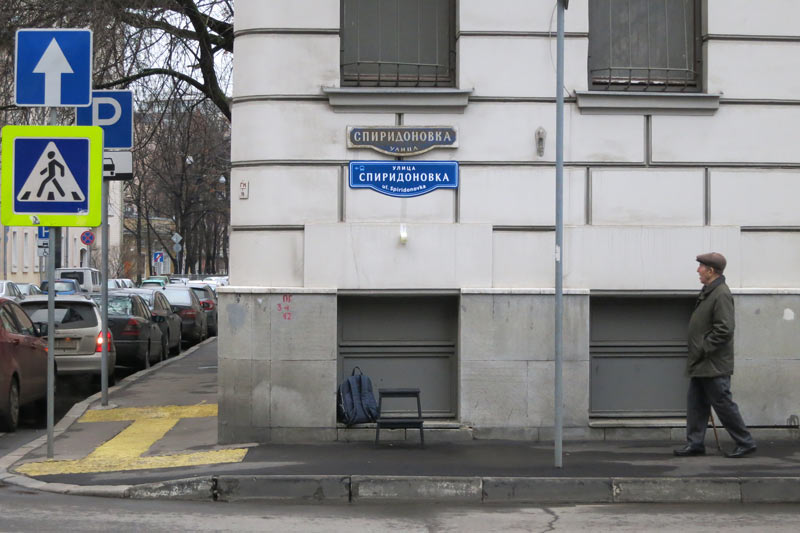
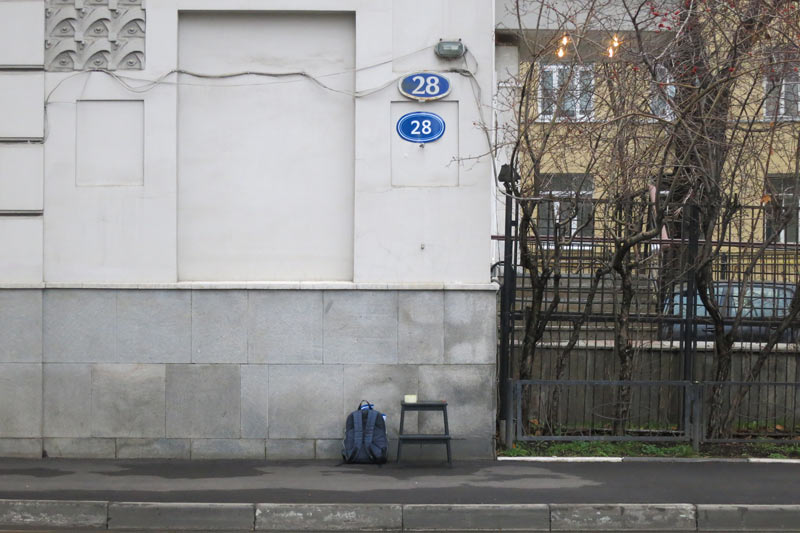
One of the problems with current plates is their width. It is often difficult to find a place for a plate on a complex facade.
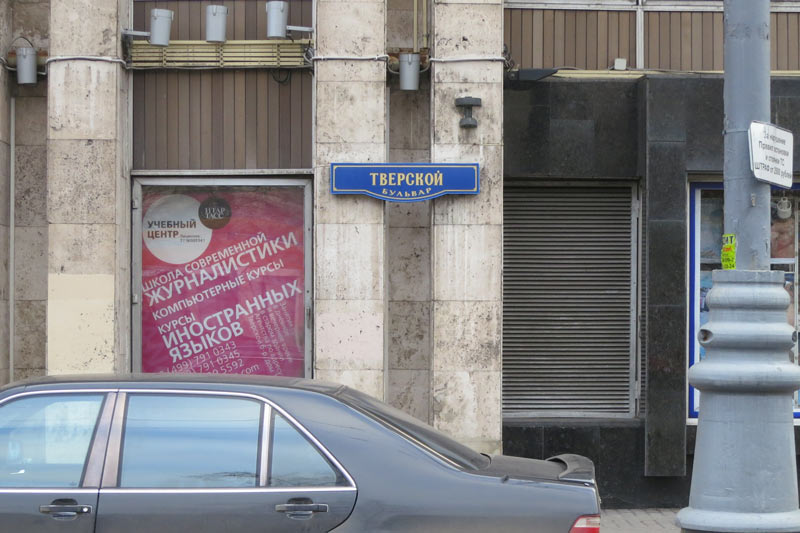
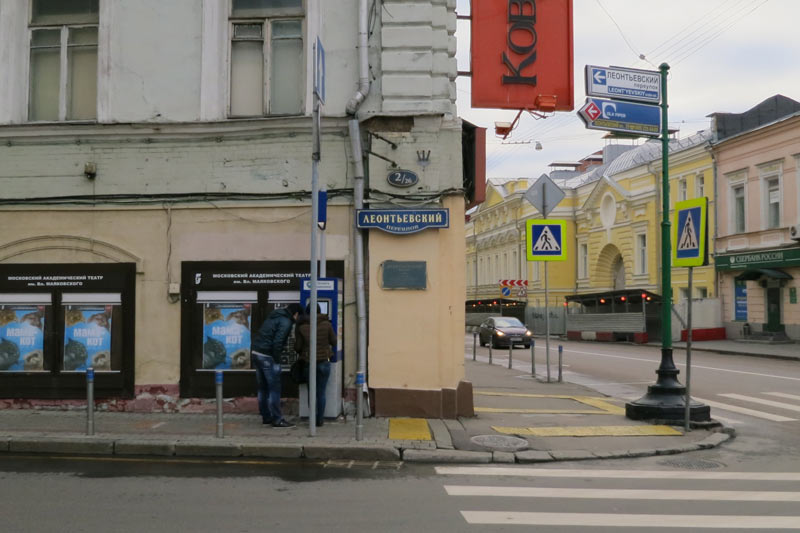
Creating plates of various sizes. The smallest is 80 cm (31,5″).
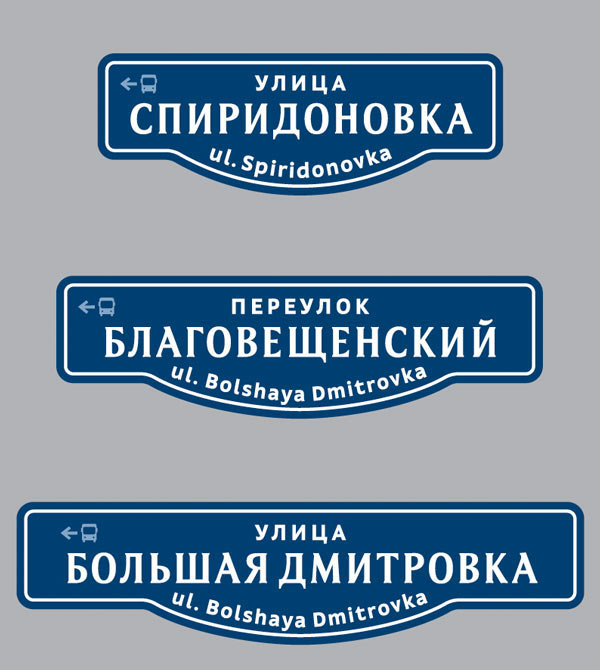
Meanwhile the work on the plates for residential districts is well under way.
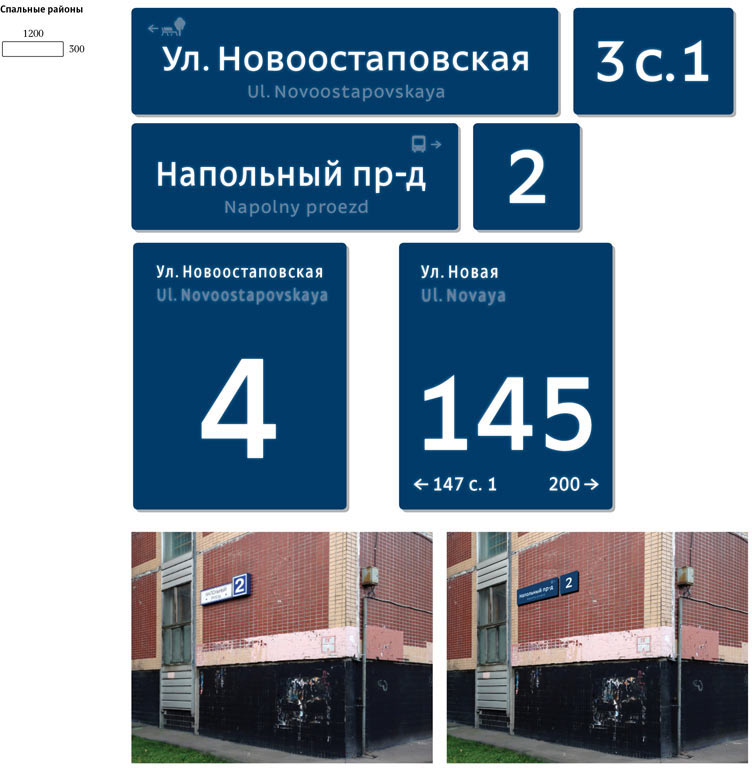
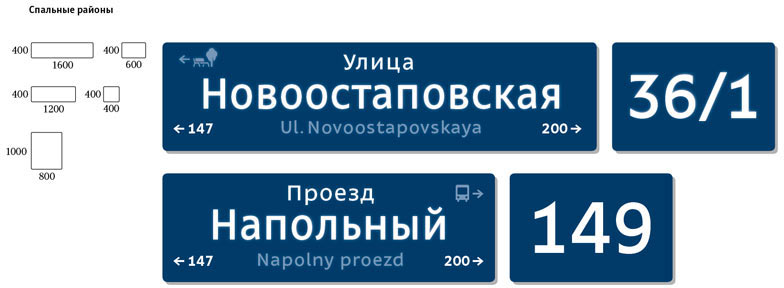
Typesetting the main text using the Moscow typeface. Placing frames and arrows.

Considering the materials and the backlight.
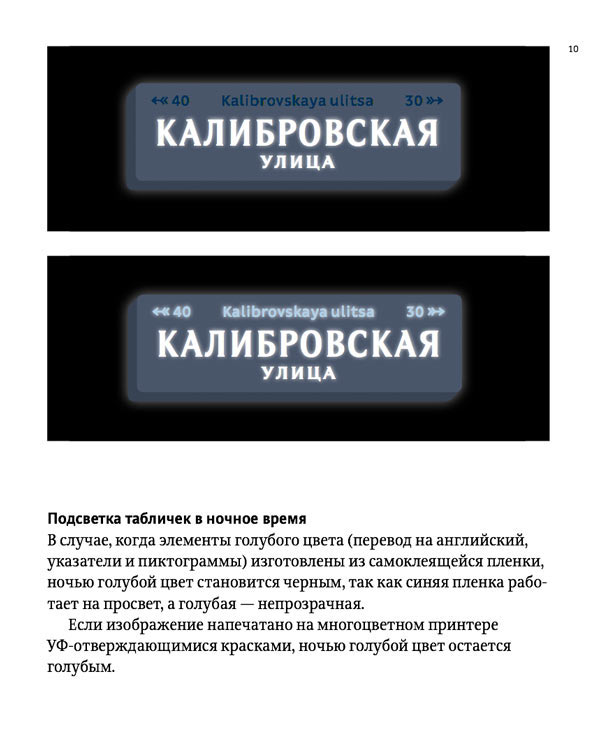
At first we had three types of plates: for the historic center, for residential districts and for areas with mixed development. The latter plates were to be made curved, although after a while this type was dropped entirely. We are left with standard plates and plates for the historical center.
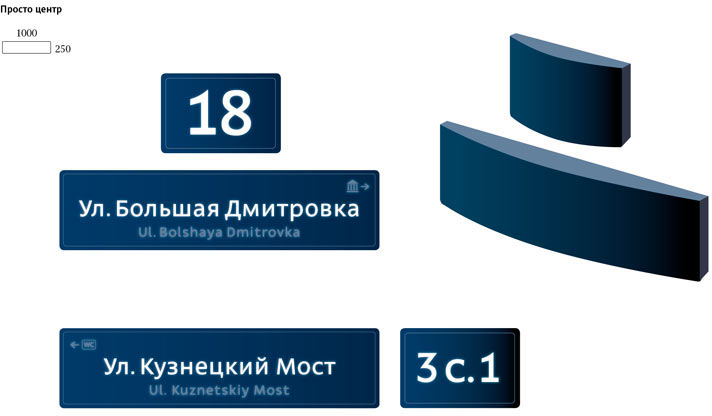
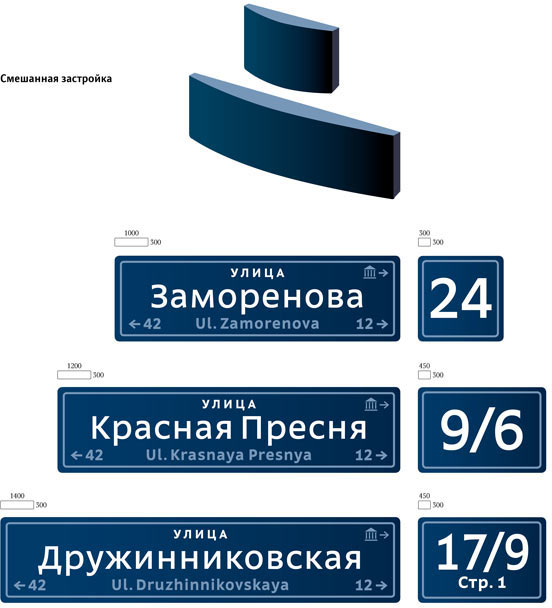
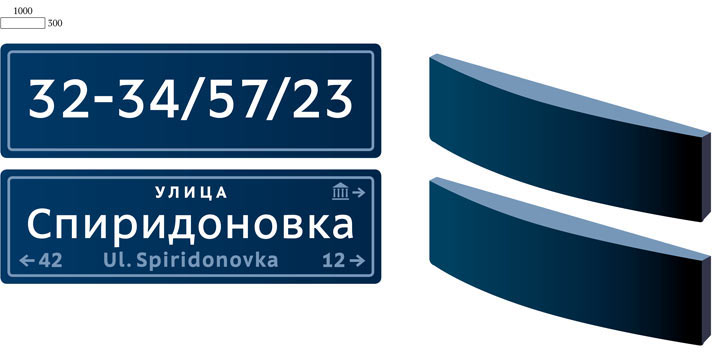
Signs
After the first demonstration we begin careful development of the signs. Searching for proportions and the layout.
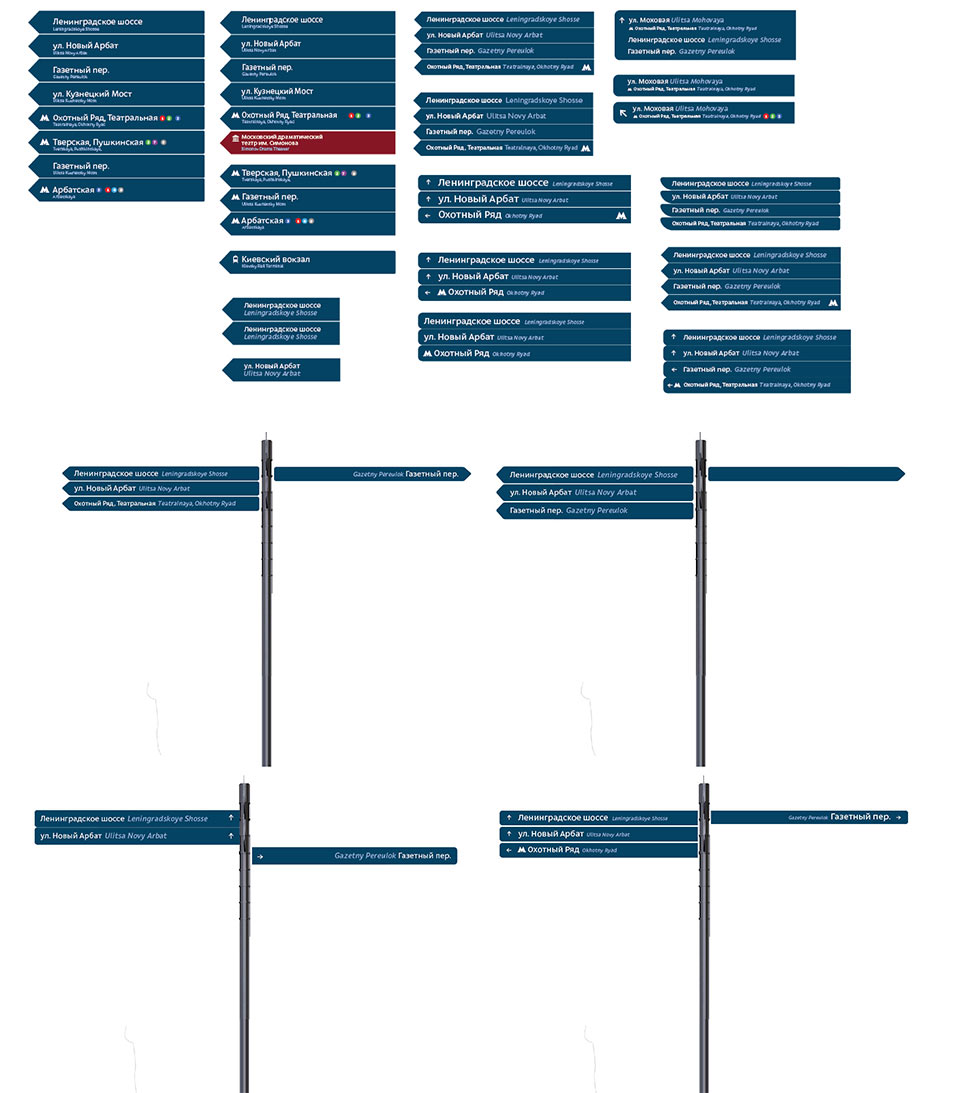
It’s difficult to see on screen. Assembling a pole mock-up right at the studio. Looking for sizes and proportions by holding sign variants to the pole. Long direction arrows don’t work either practically or aesthetically. Experts in advertising equipment join in, consulting us on wind loads on signs and peculiarities of their installation.
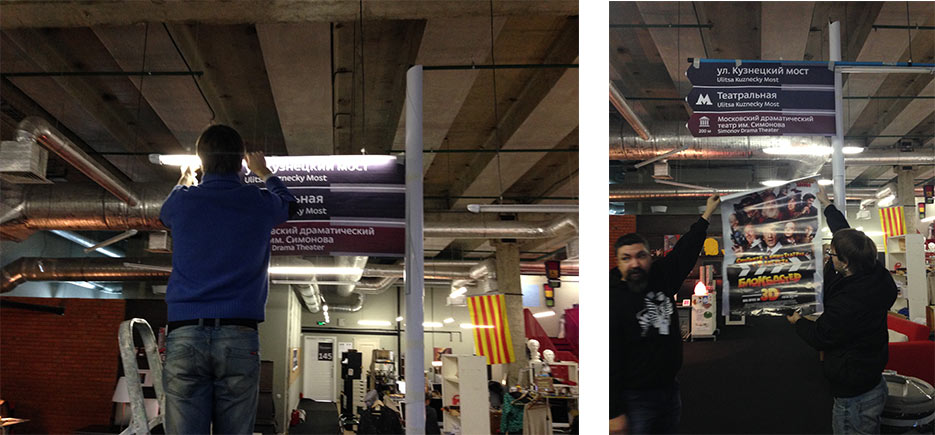
Defining the task more exactly. We need each sign to have the name of the object in two languages, additional object icons, walking distances and a direction arrow.
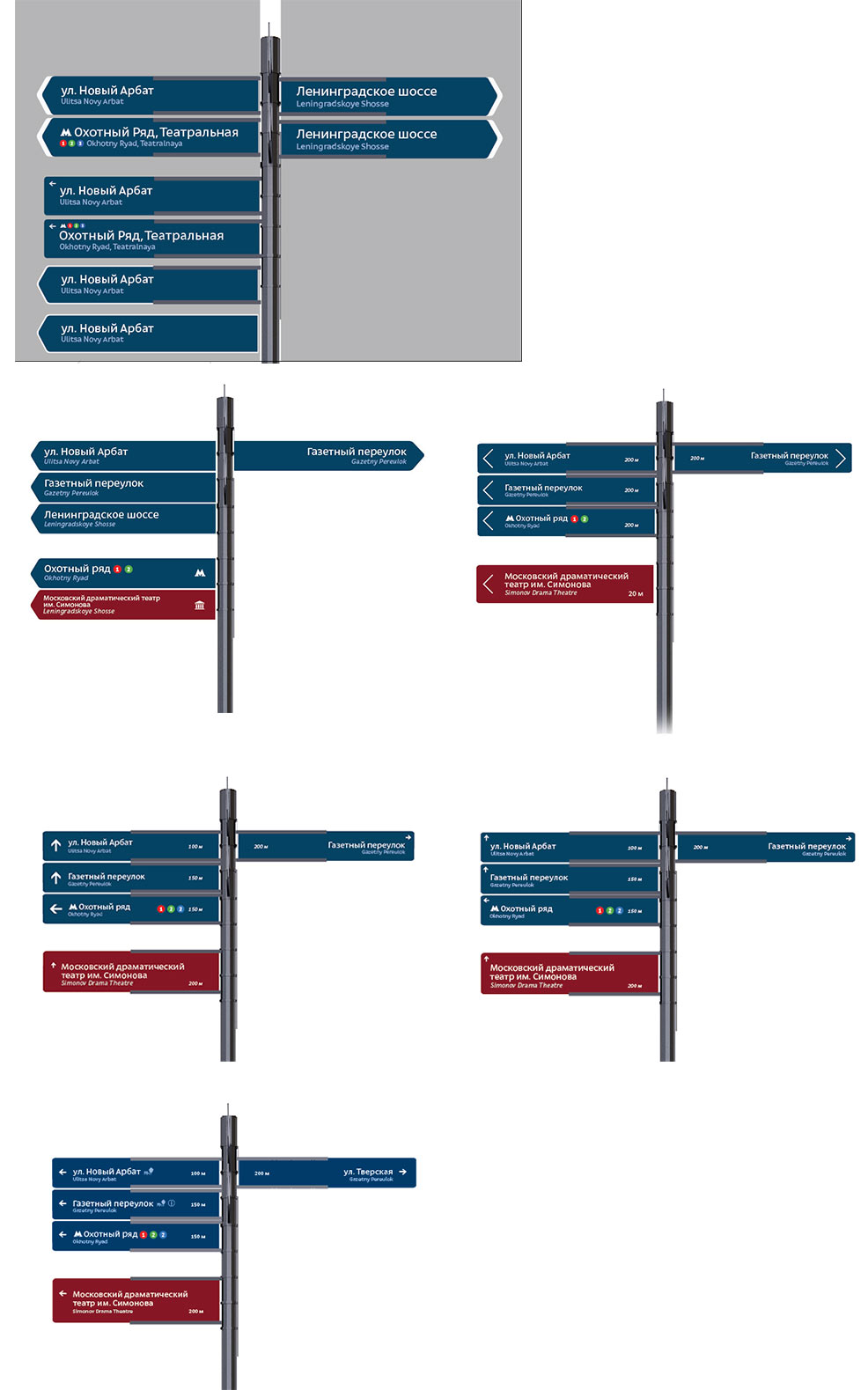
Typesetting different types of signs with names of various length.
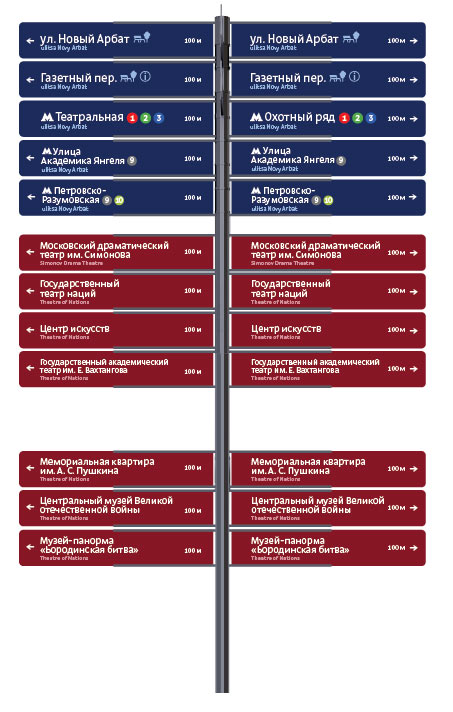
Trying it out in the city.
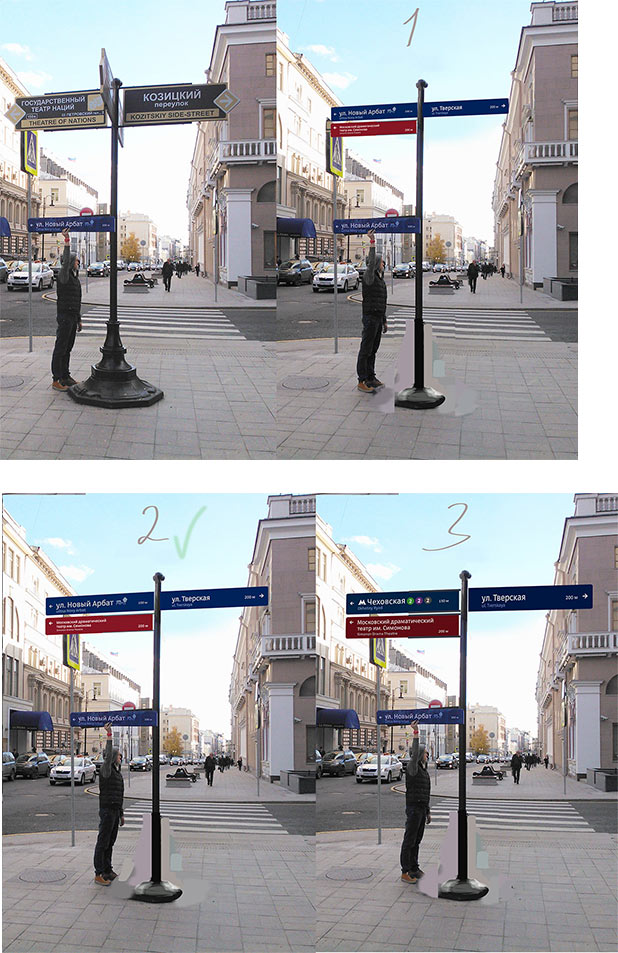
Adjusting the size and proportions. Presenting.
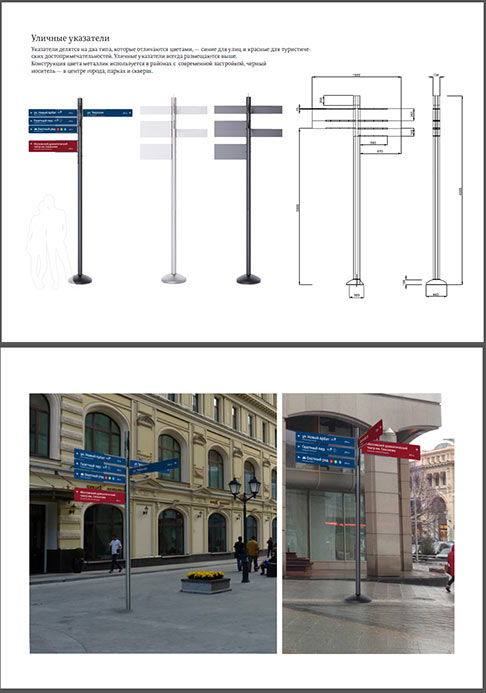
Getting another portion of comments from the experts, increasing the height of the signs. Presenting again.
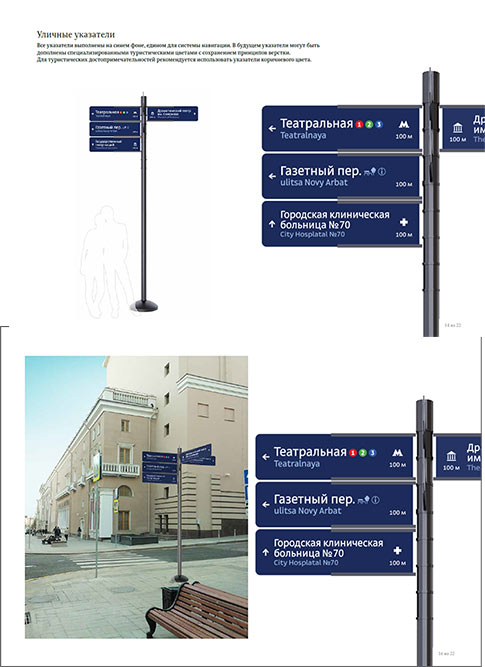
Meanwhile the task is being transformed. The city plans to start with navigation to public and tourist objects (theaters, parks, museums, stadiums, police stations, medical facilities, universities, schools, etc.) and introduce transport navigation and street location signs later. The signs also must include the address of the object. Adding the address. Aligning the text block and the arrow along the top edge of the sign. Keeping in mind transport signs which will be introduced later.
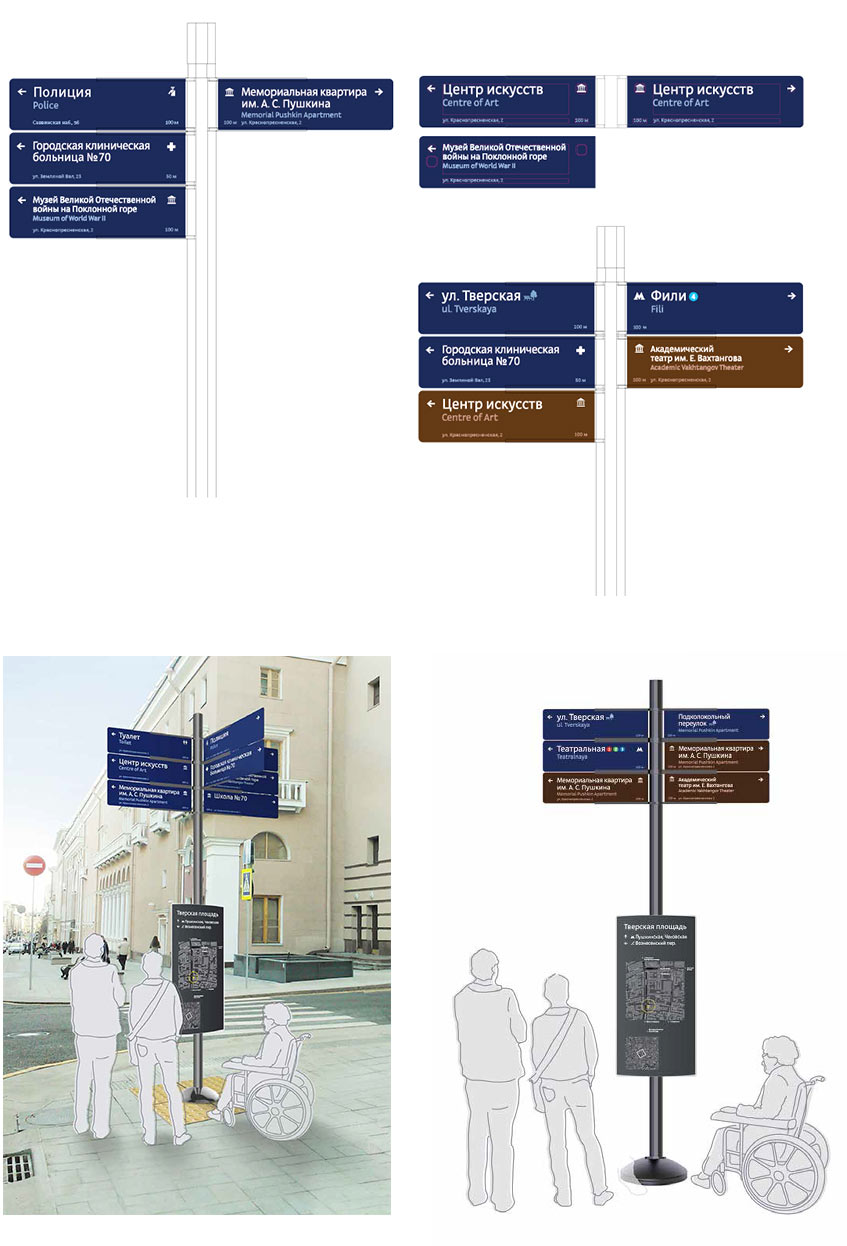
Typesetting the variants, deciding on type size for names of different length.
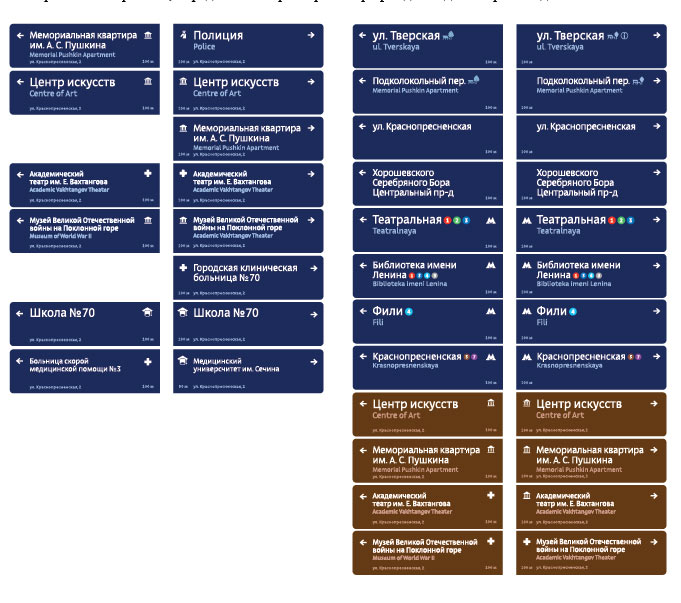
Our main task is to produce a universal template which would allow to easily create any sign in the future. The signs will have names of city objects and organizations, among them there are lots of government organizations with extremely long names. The common sense tells us that such names have to be abbreviated: we need to cut out forms of ownership, use well-known acronyms, remove the word “Moscow” from the names. For example, like this.
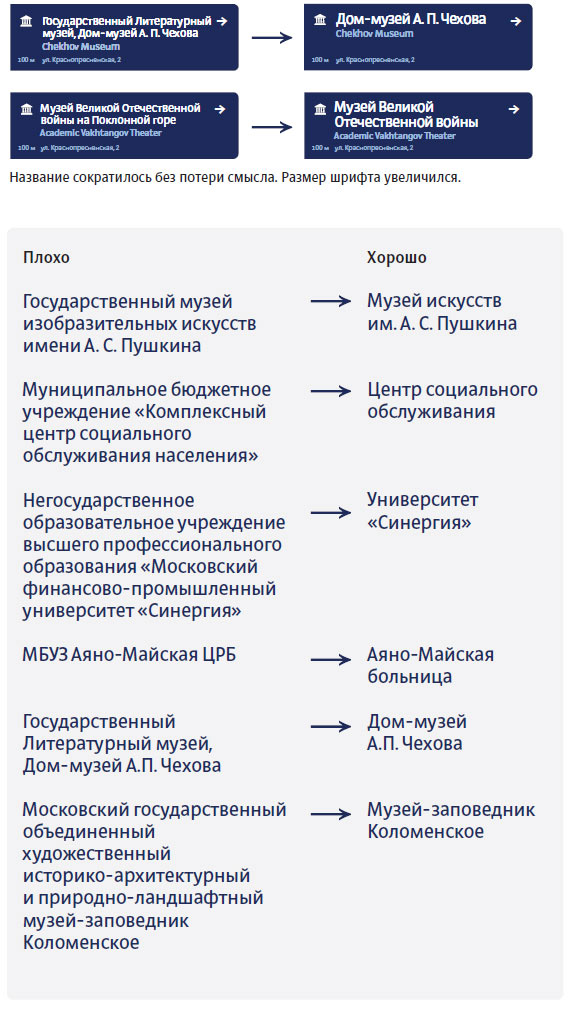
However, while it is easy to derive “Lomonosov Moscow State University” from the official name, it is quite unclear what to do with something like “State Educational Institution of the City of Moscow ’Griboyedov Gimnasium No. 1529.’” Do we keep Griboyedov in? Do we call it a school or a gymnasium? We need a fixed set of rules to cut out any doubts. Analyzing the names, finding consistent patterns and assembling the examples into a guide on abbreviating official names.
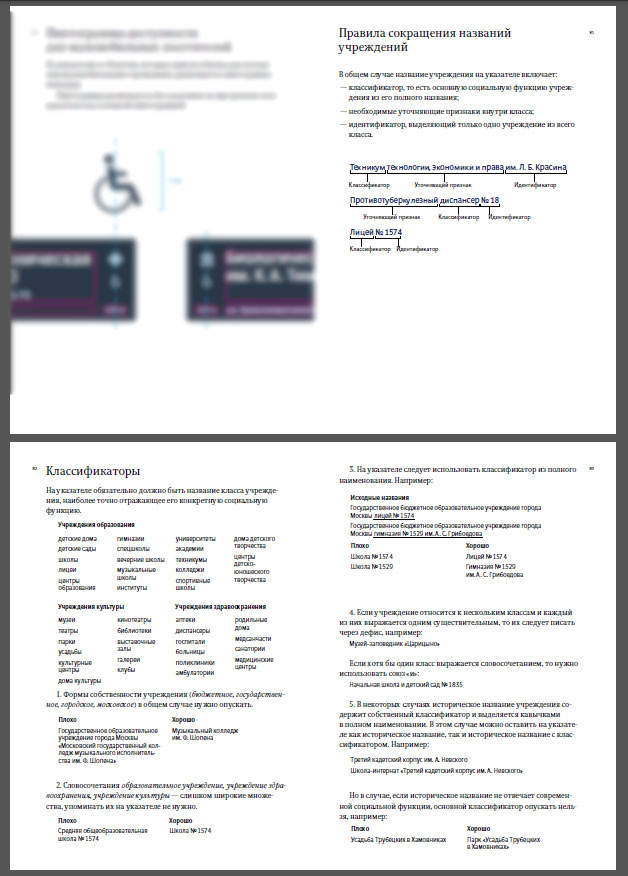
Pictograms
The navigation system must have a set of pictograms. Considering what icons we will need and drawing the first drafts.
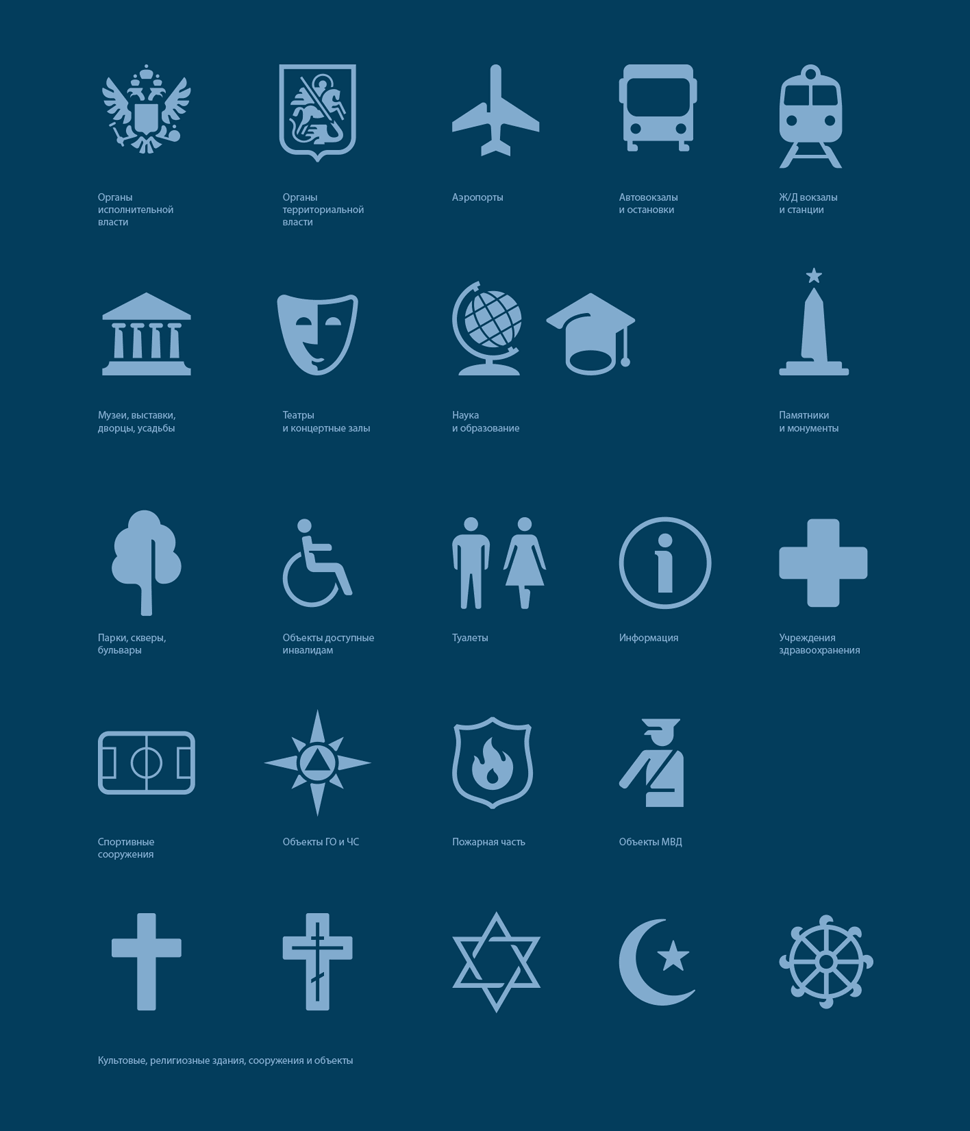
All right, it seems we’ve overdone the legs on the bus.

Again.
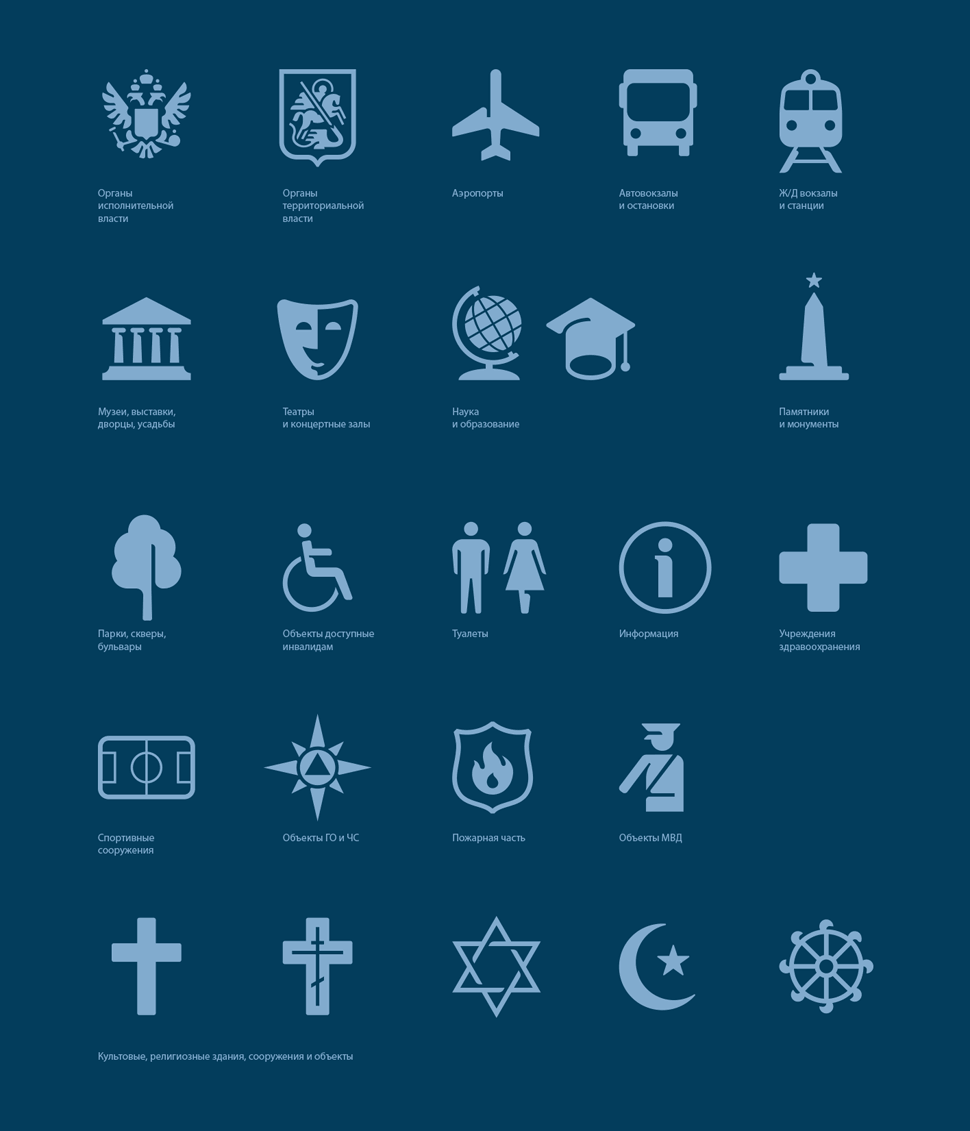
Artistic director: The eagle looks Polish and the icons overall lack the Russian spirit. What’s that gendarme doing there?
Is it because of his shoulder belts?
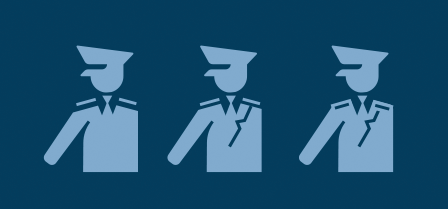
Our guys definitely don’t wear belts like these. The caps they have are also different.
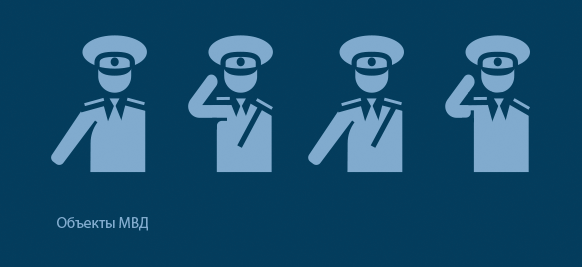
The eagles.
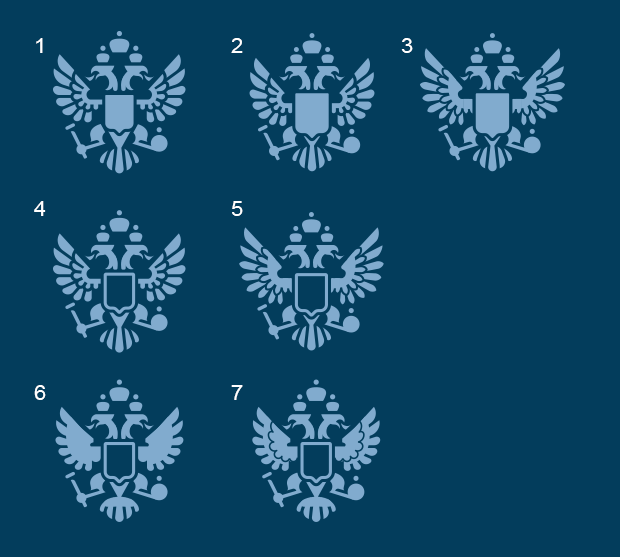
More Russian spirit. Ikarus bus and a slightly different train.
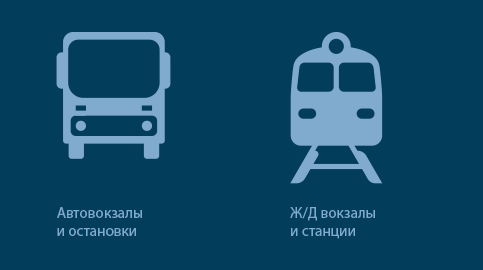
No, they all lack the familiar traits. Where is the VL locomotive? Or the Riga one, at least? And it’s been at least ten years since anyone saw an Ikarus on the street. Drawing a long-haul bus because this pictogram will most likely be used solely for intercity bus terminals.
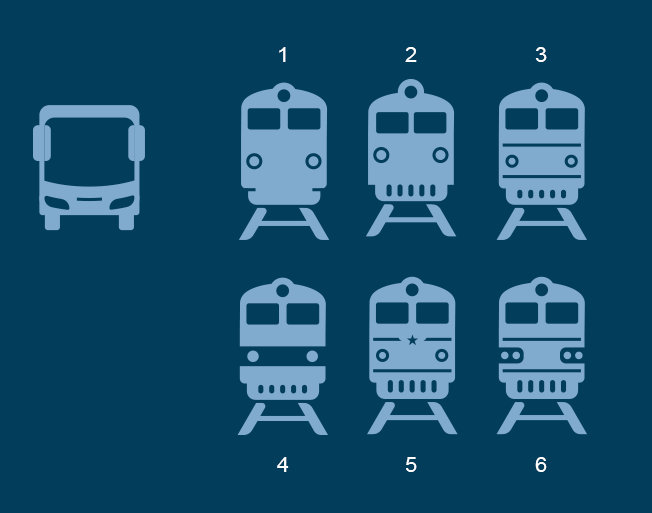
Also, the globe in the set looks too complex, we need to calm it down.

All right, all together now.
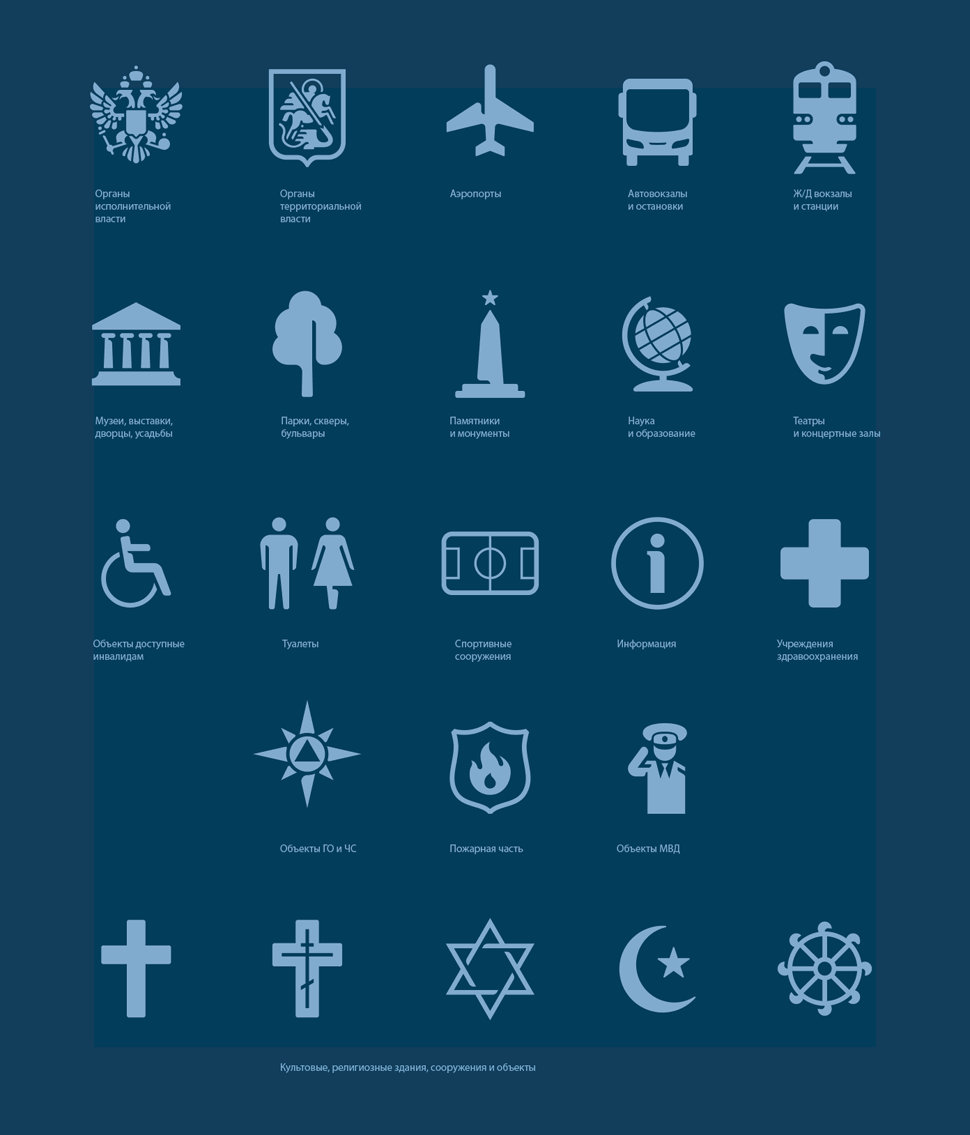
In Moscow such monuments and memorials can only be seen in cemeteries. Maybe use a different image?
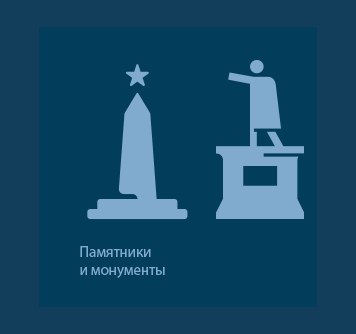
We can remove the arm and it will be a generic monument. Or we can make it in the shape of a male toilet pictogram? Would be a great monument by the way, we need to think about that :-)
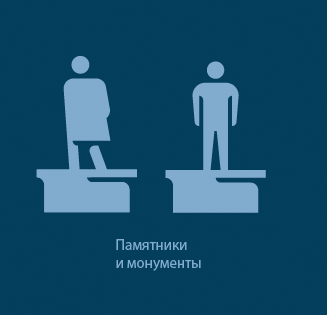
We don’t have firehouse shields in Russia, it definitely came from the US. Maybe a fire truck then?

No. A helmet, fire, a fireman with a hose...
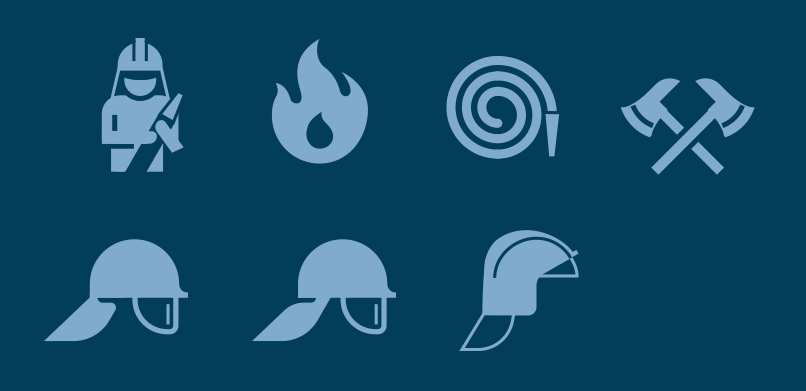
The axes are OK. Including the pictograms into the navigation system.
The last push. Putting together the guide book on the design of street name and house number plates, signs, typefaces, icons, abbreviations, colors and dozens of other details.
